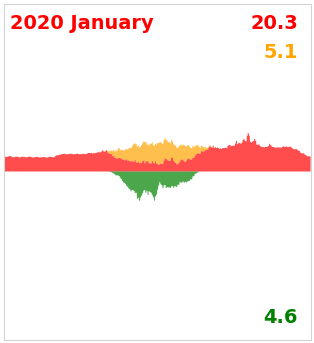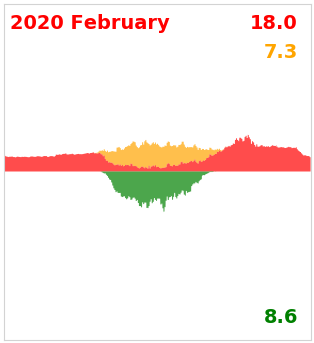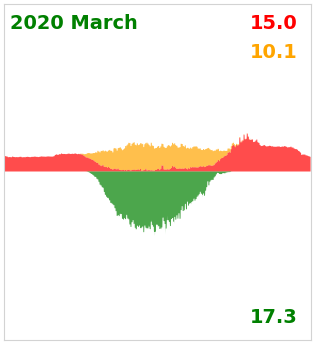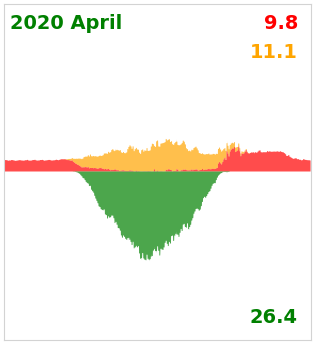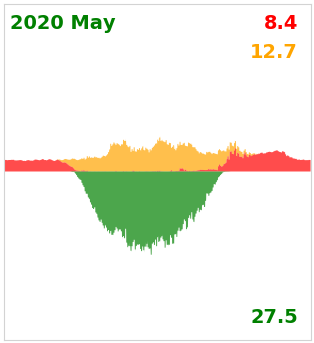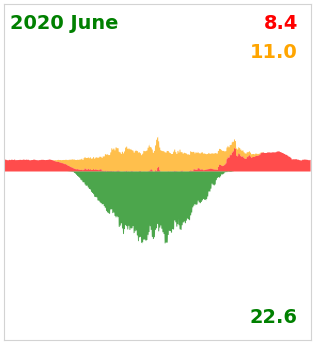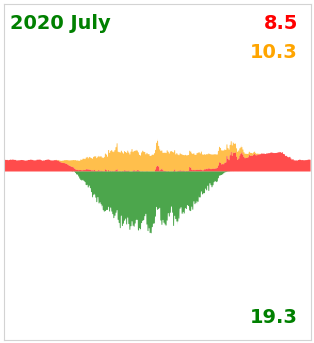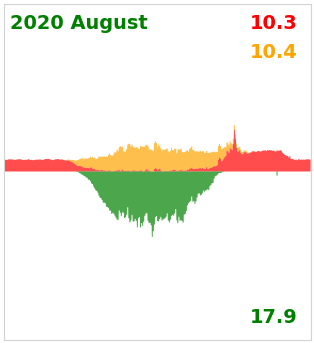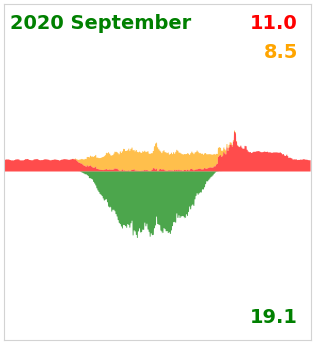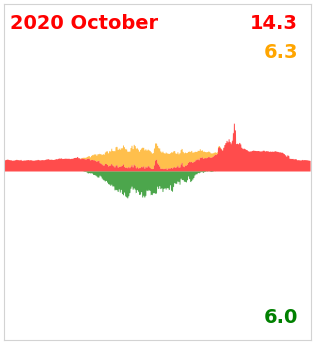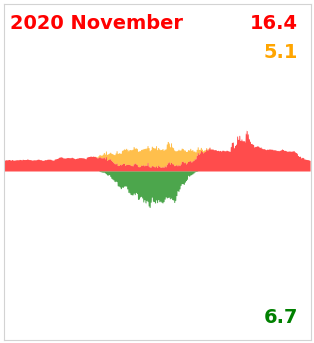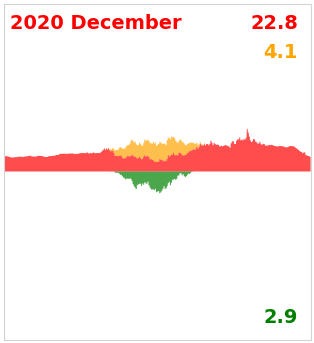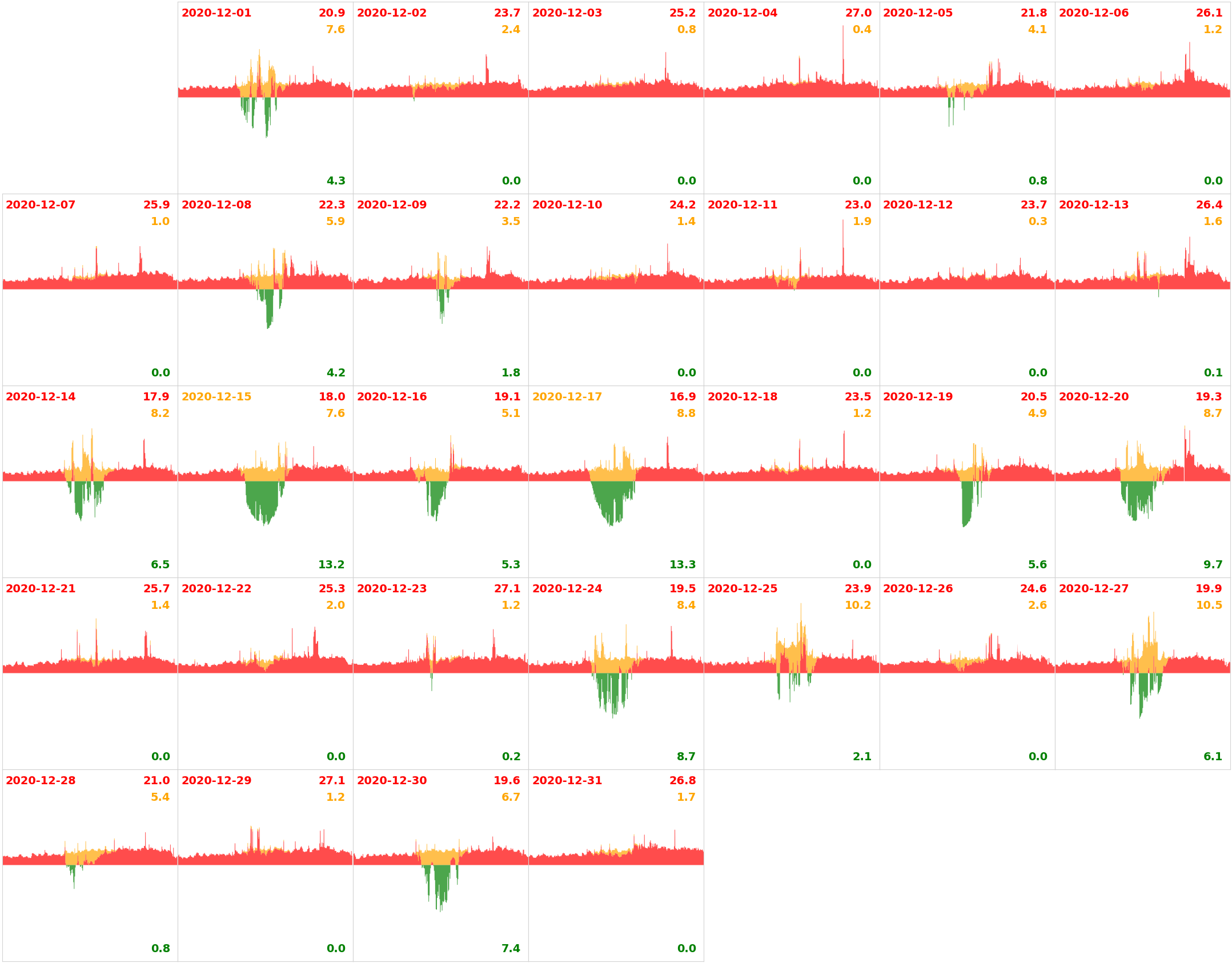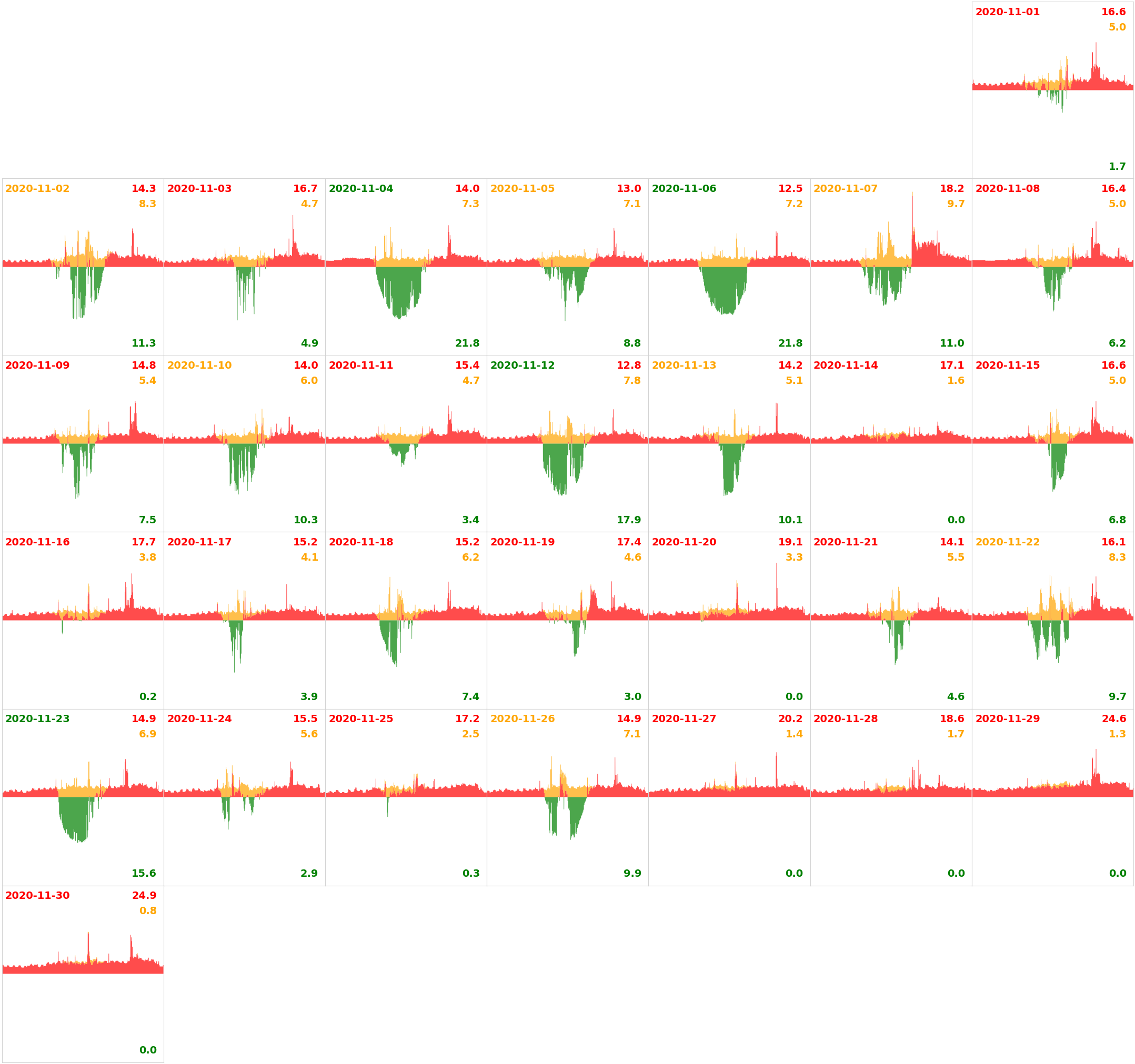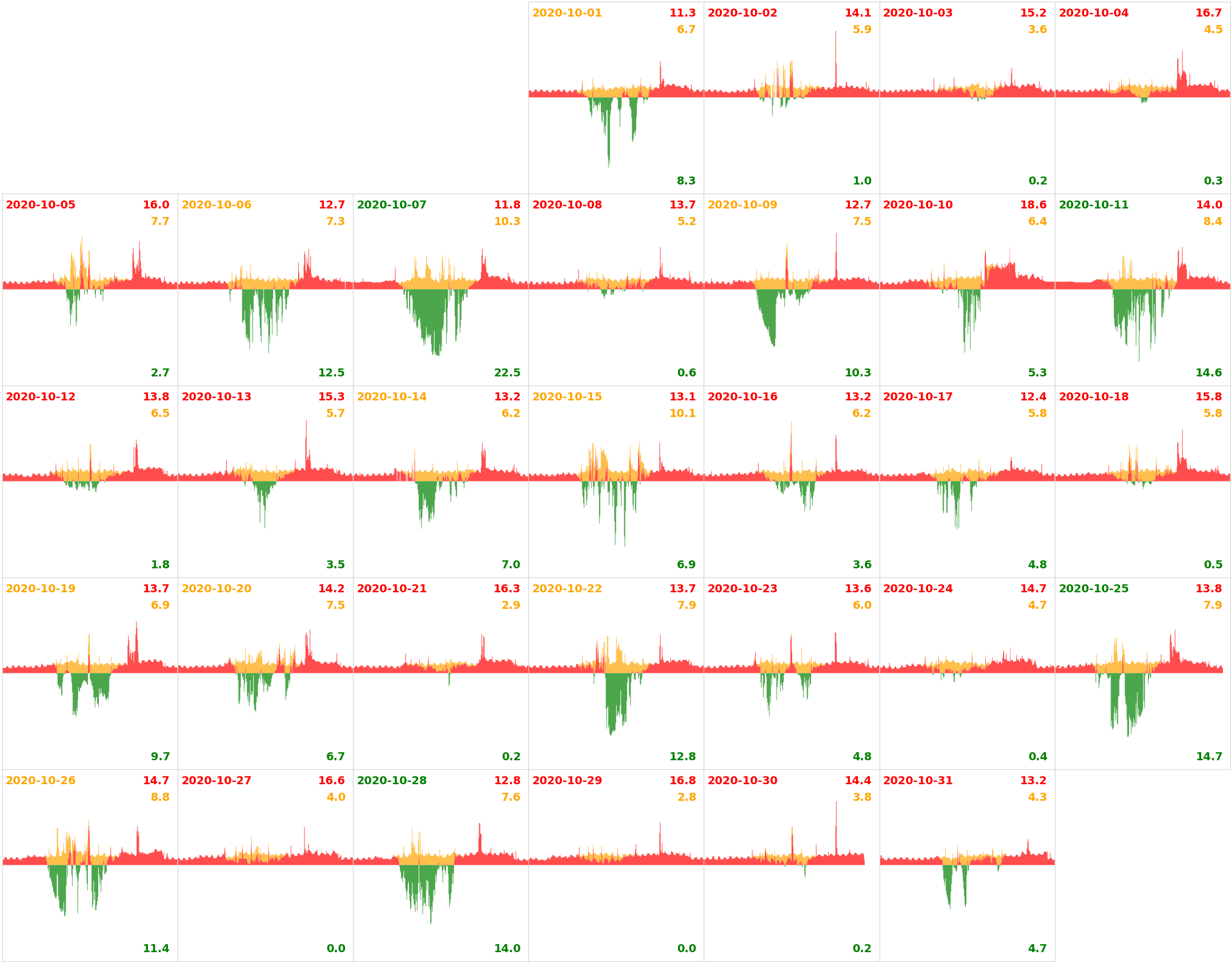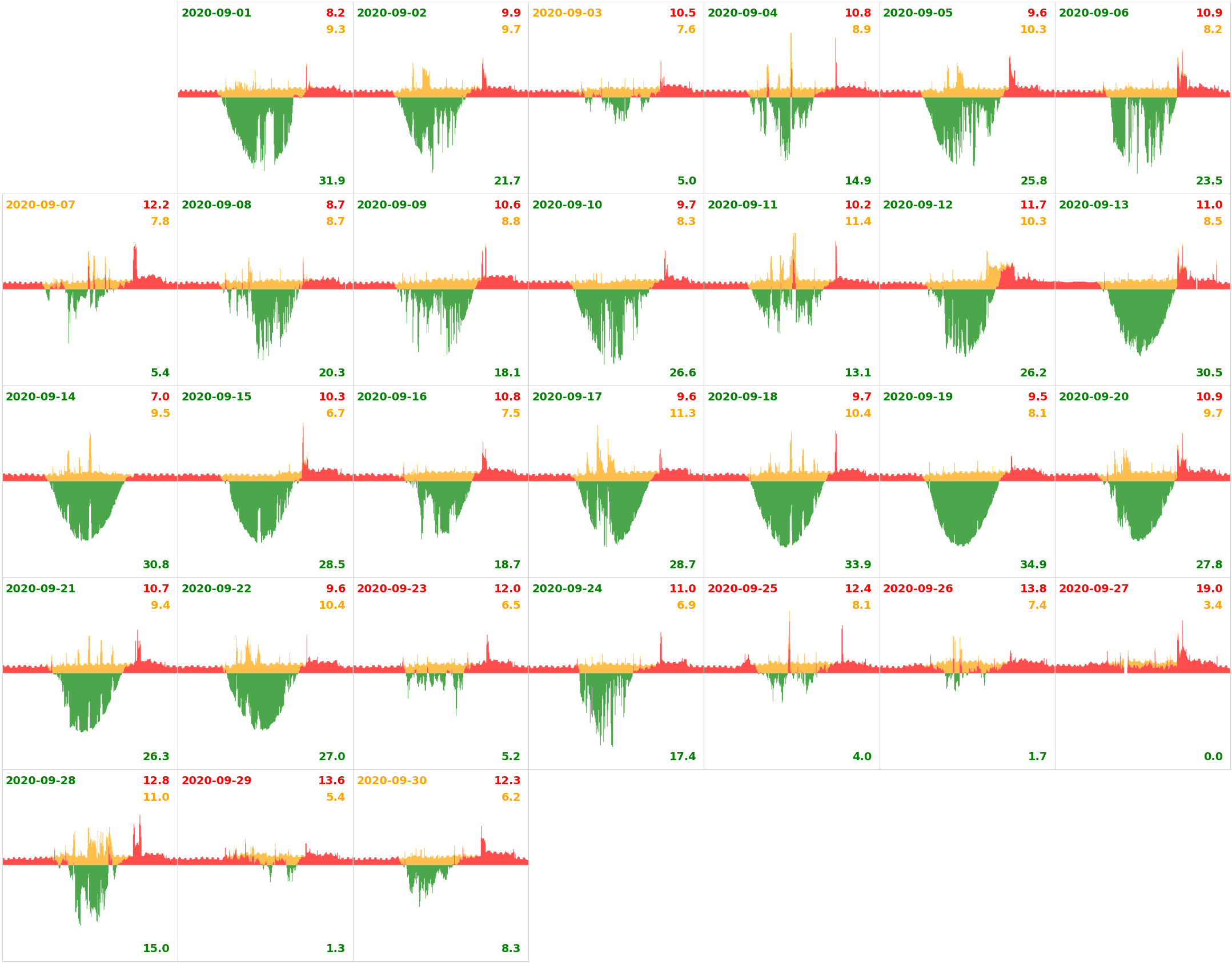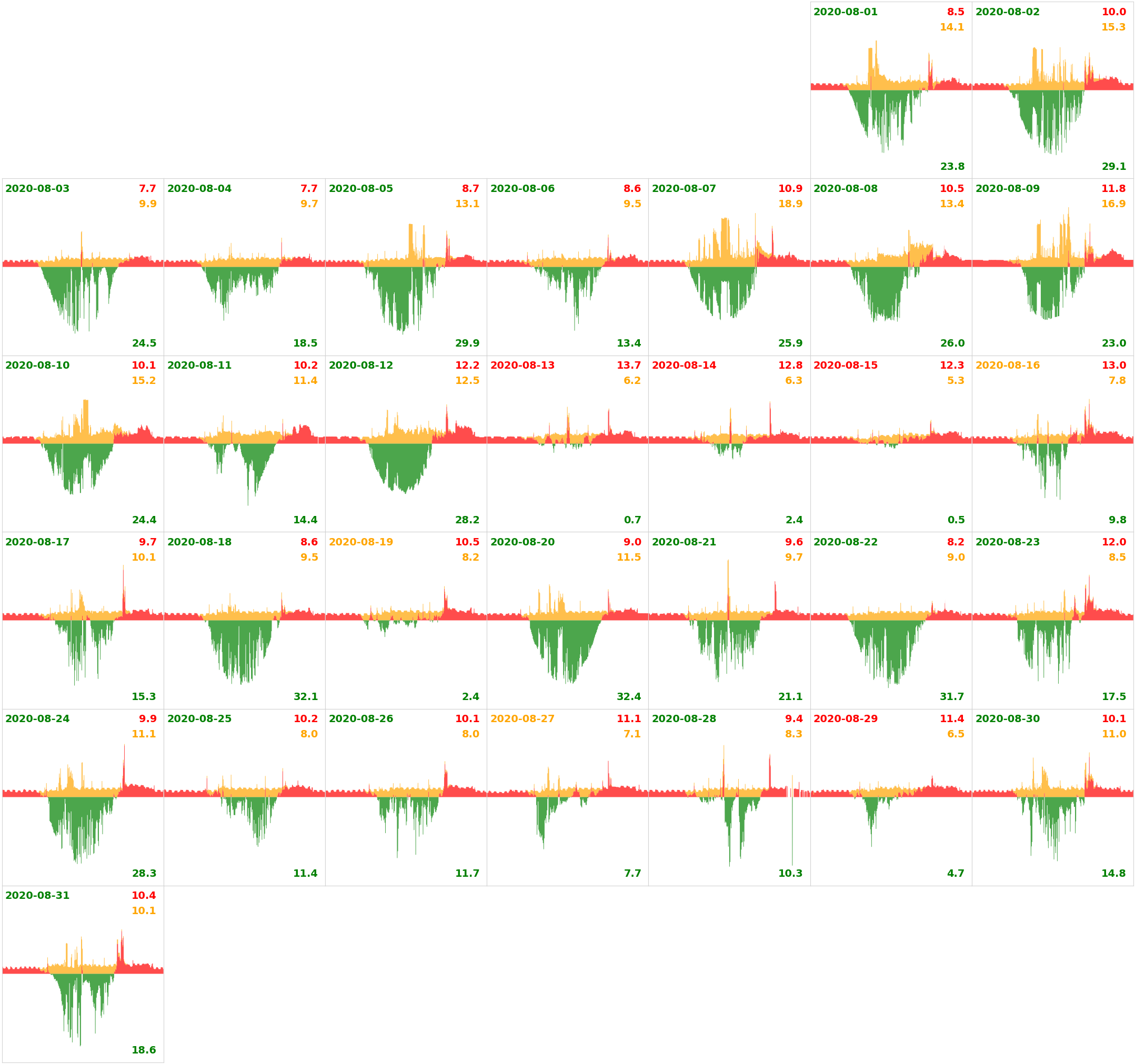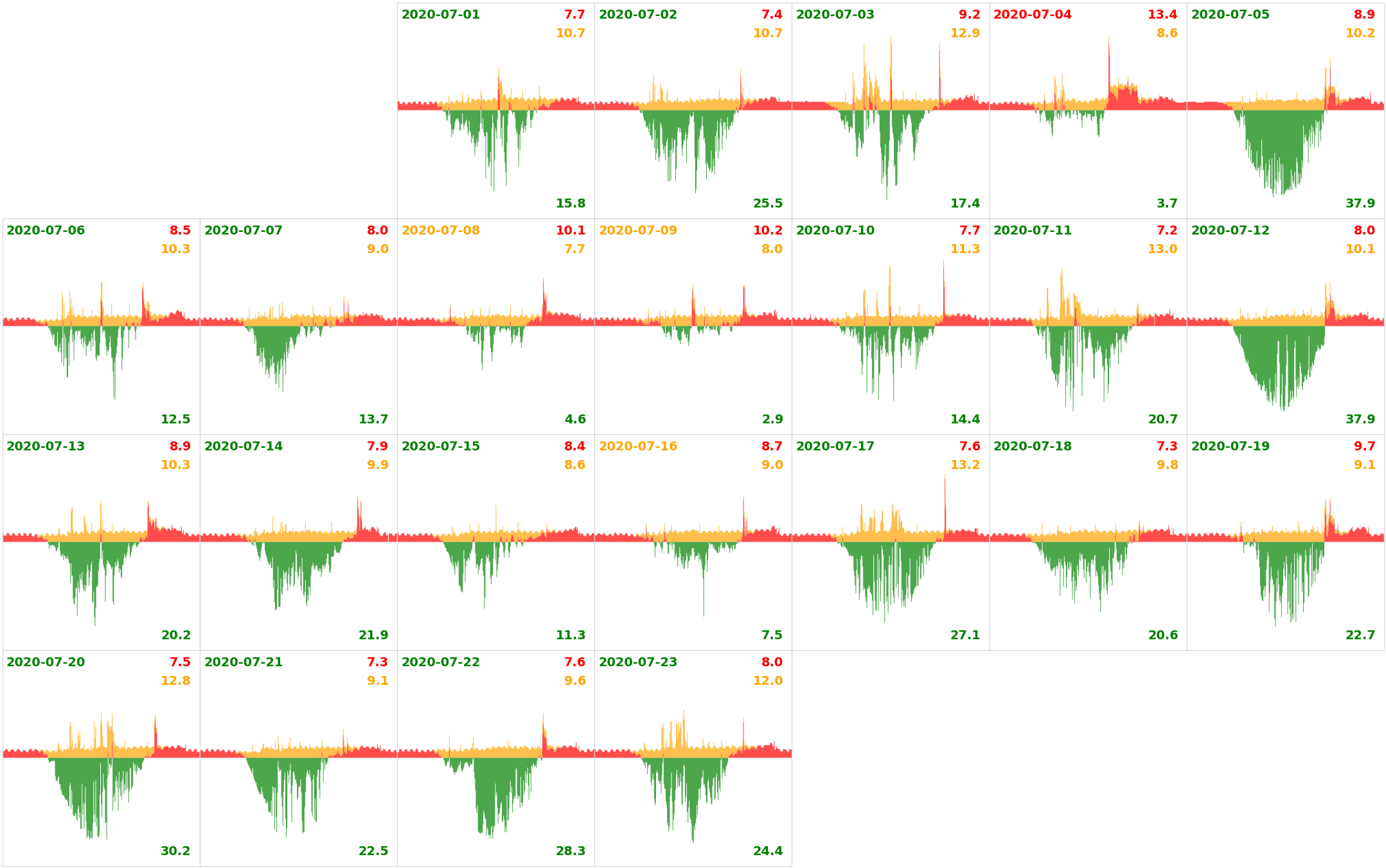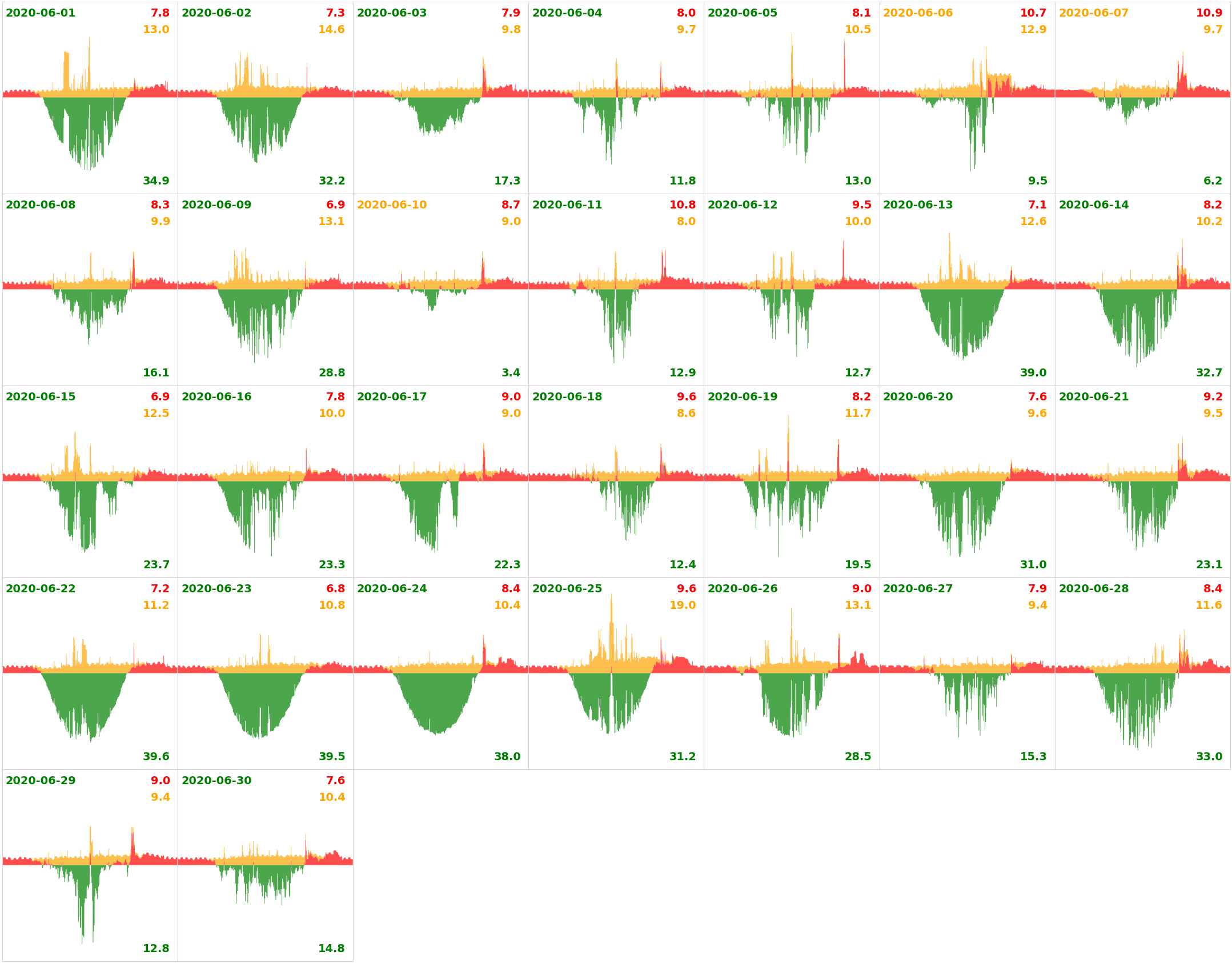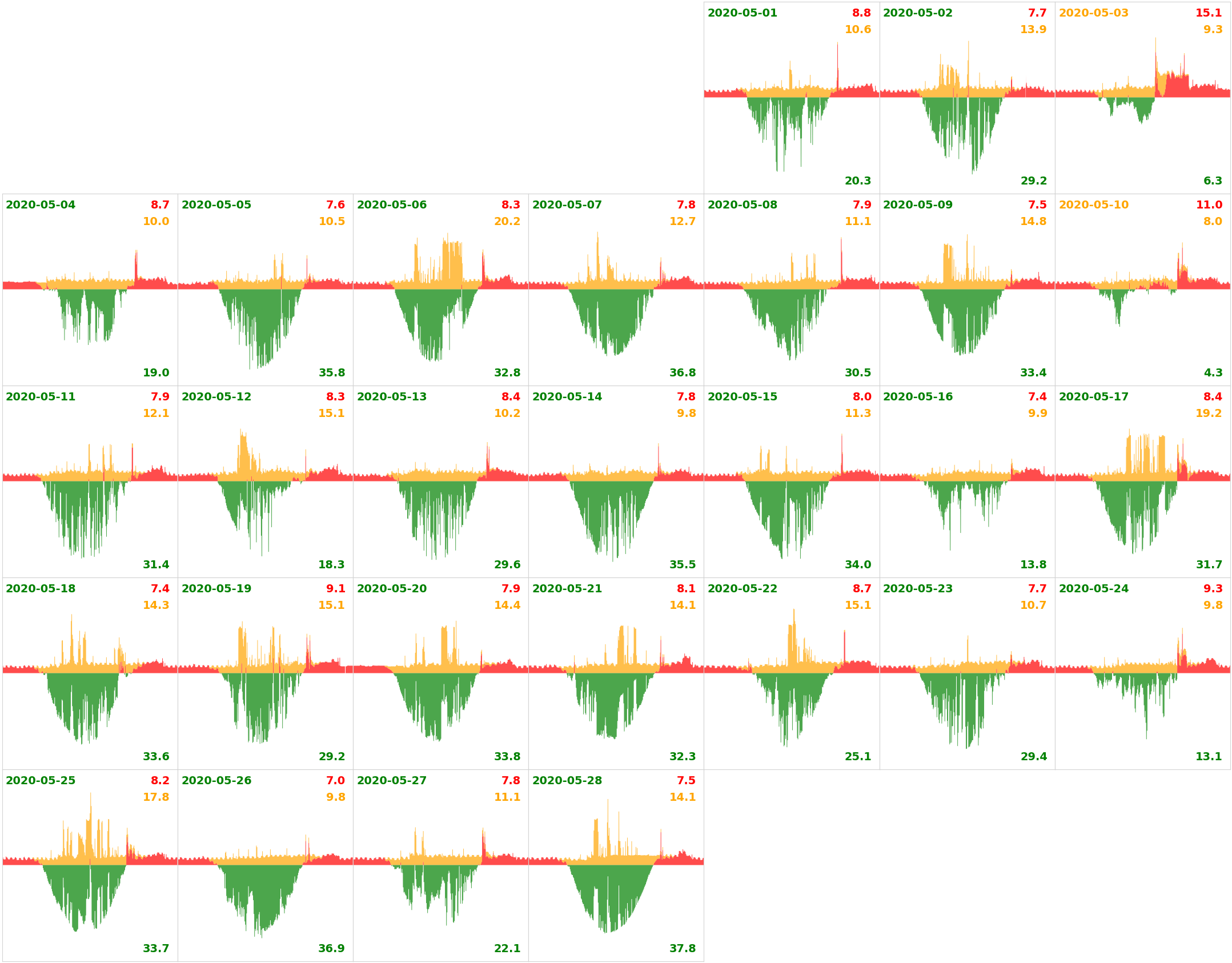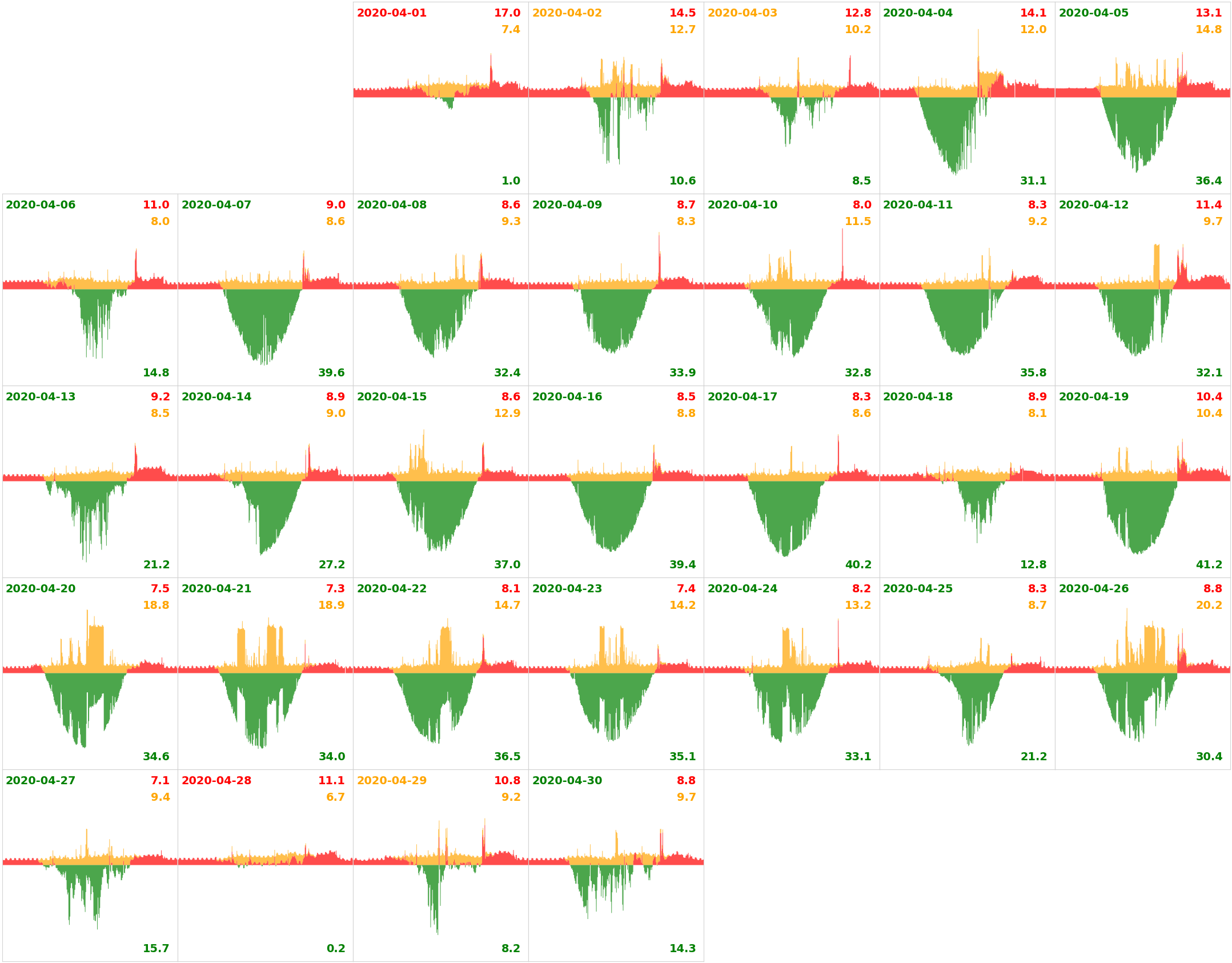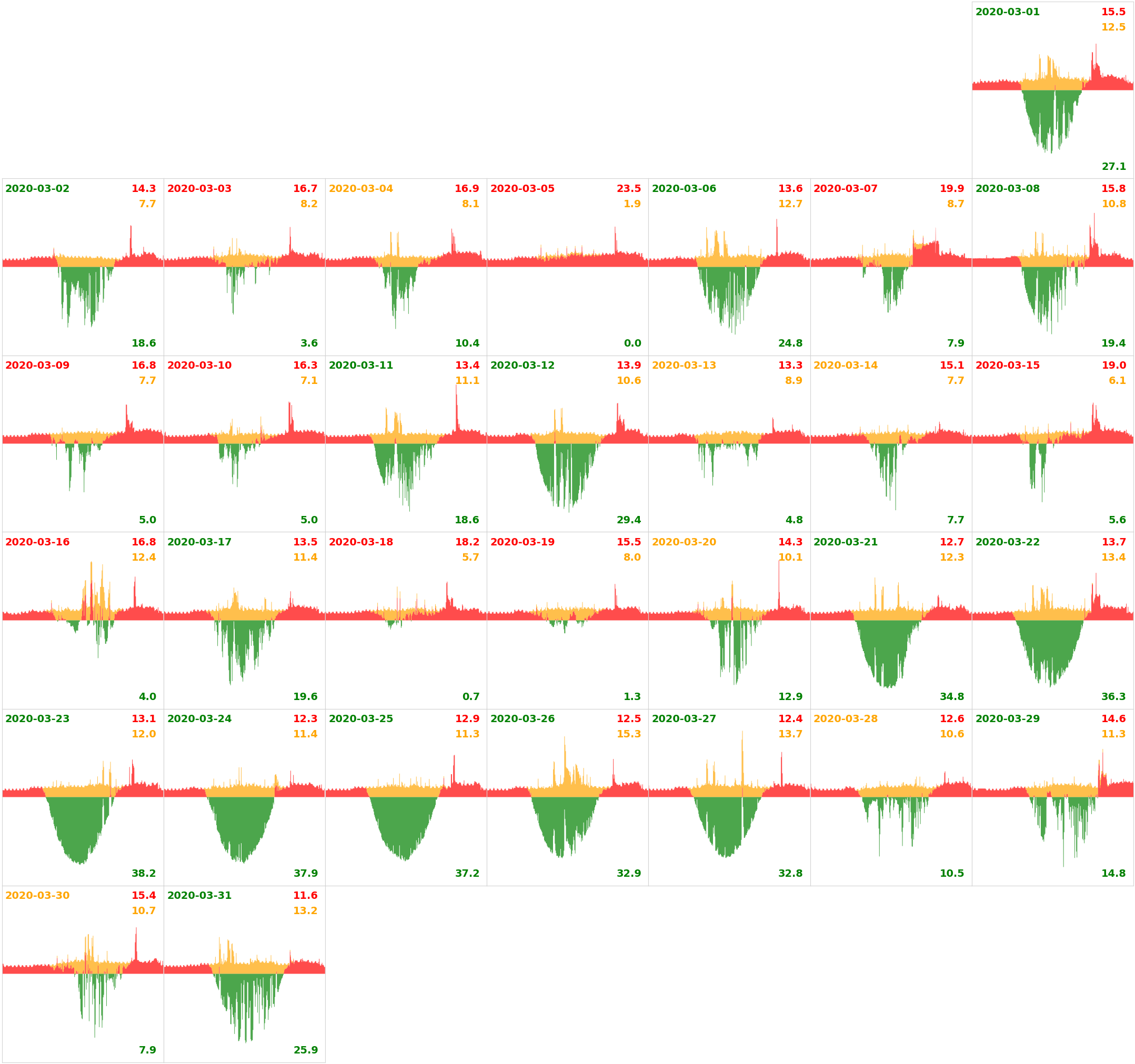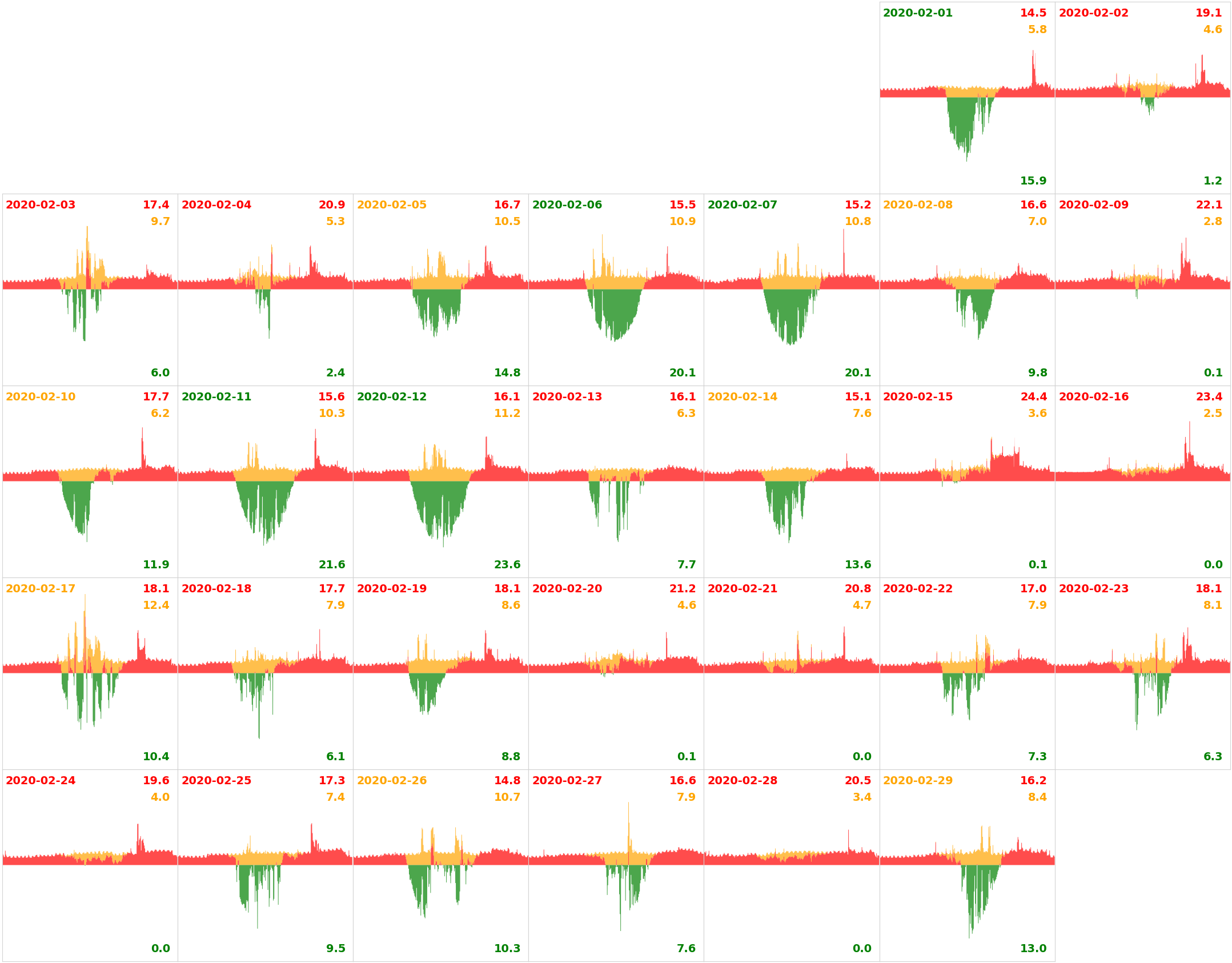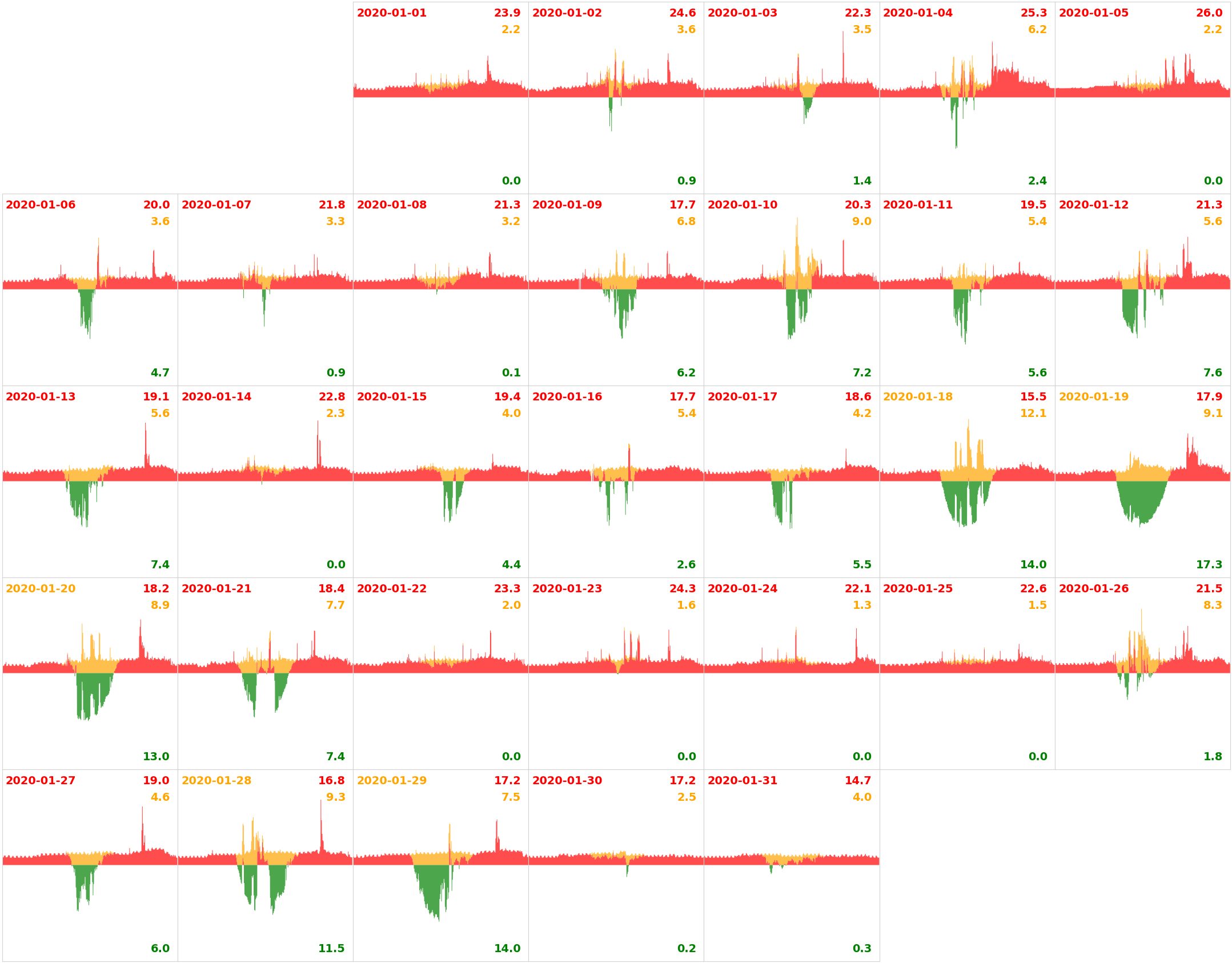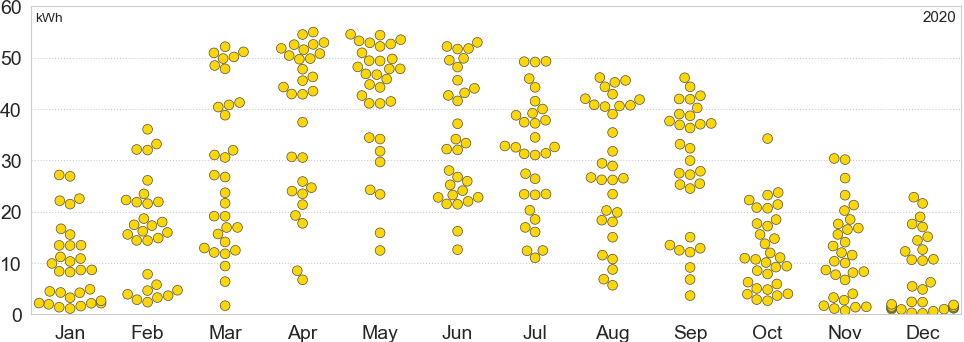
Graphs of the electricity generation statistics gathered from our solar PV generation system, 2020.
Our cumulative annual power generation in MWh (bars), with shading indicating the contribution of the respective months. (Generation started on 9 Jan 2014.)
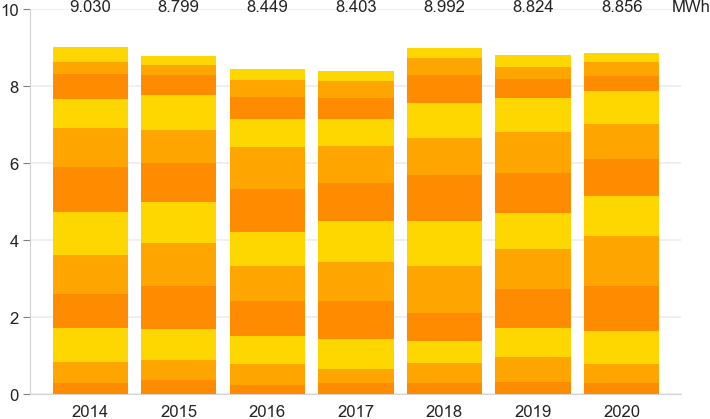
Our annual power generation in MWh, with each month's contribution base-aligned, to allow comparison across months. (Generation started on 9 Jan 2014.)
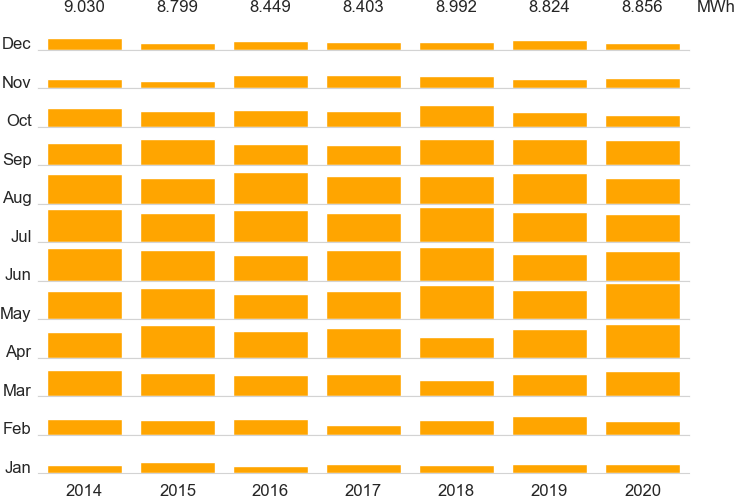
Our daily power generation in kWh (bars), along with minimum (dot-dashed), lower quartile (dashed), median (solid), upper quartile (dashed), maximum (dot-dashed) running averages over the previous 14 day sliding window.

Our daily power generation in kWh, per month, using a jitter plot (some jitter is applied to the horizontal position, to prevent overlapping).

Our daily power generation in kWh, per month, using violin plots (a notched box and whisker plot—where the box shows the inter-quartile range, with 95% confidence interval notches; whiskers show data within 1.5*IQR—plus a kernel density plot).
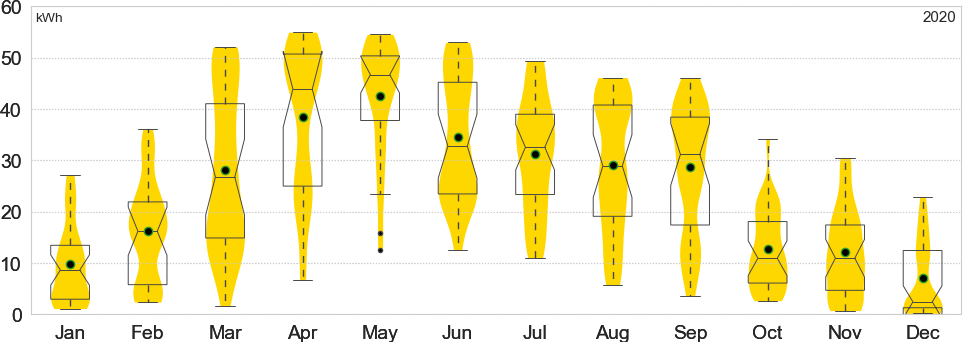
The vertical time axis runs from 3:00am to 9:00pm GMT. There is one column of data per day. Data is gathered every 5 minutes.
Each pixel represents the energy generation at the sample point. The colour indicates the energy generation in the relevant interval: darker colours indicate more energy.
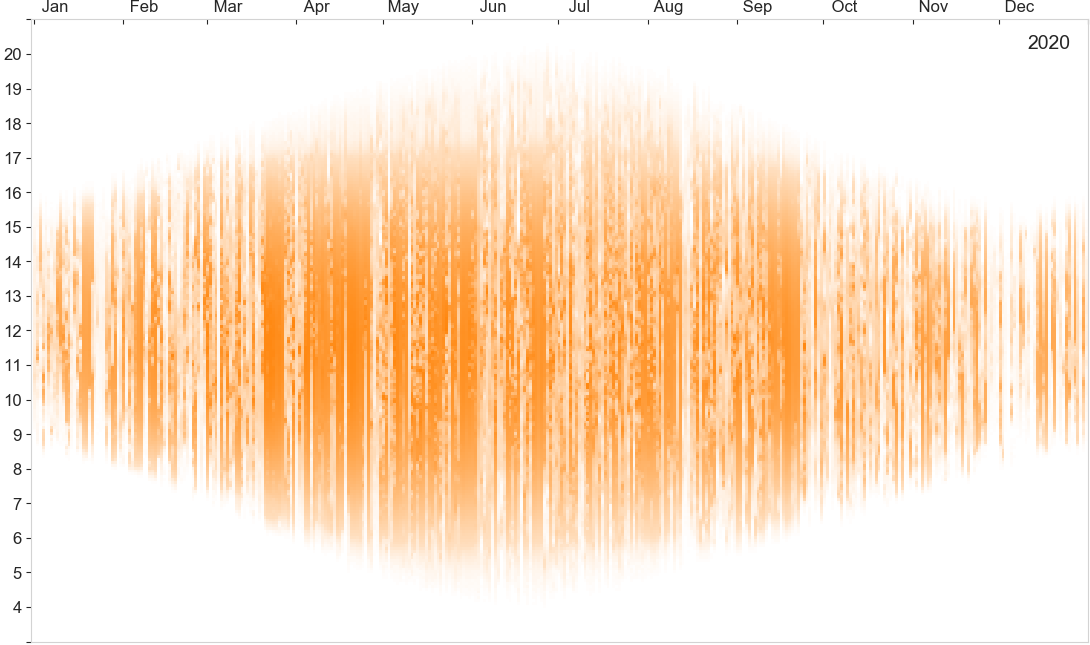
Data is gathered at 5 minute intervals. The horizontal time axis runs from 3:00am to 9:00pm GMT. The vertical axis runs from zero to 8kW. The orange regions indicate the minimum, lower quartile, median, upper quartile, and maximum generation at that time, over the month. The line indicates the actual generation at that time (or the monthly mean, for the monthly average plots). The number in the top right is the total generation in kWh that day (or the monthly mean, for the monthly average plots).
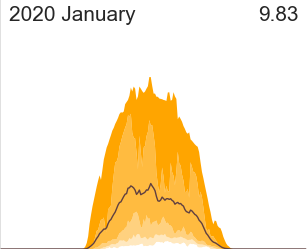
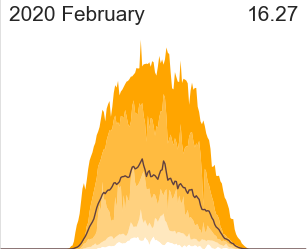
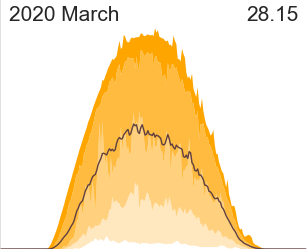
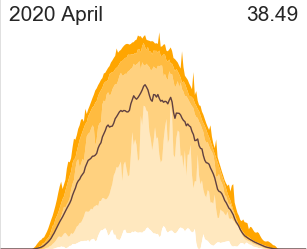
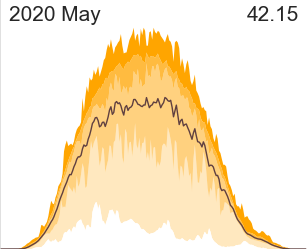
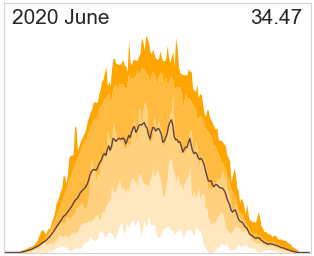
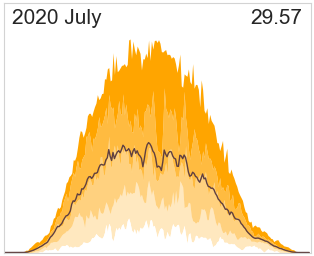
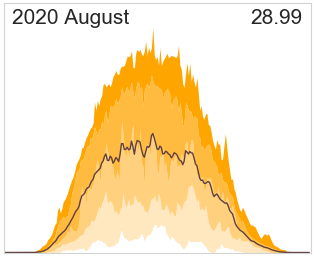
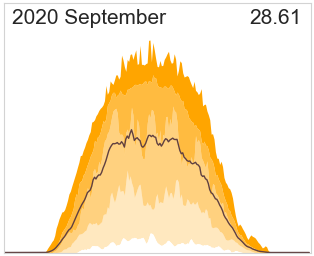
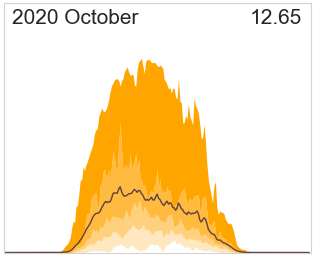
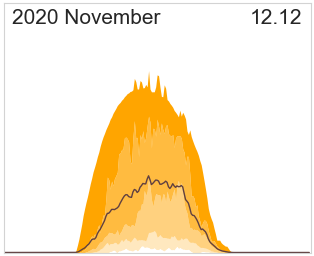
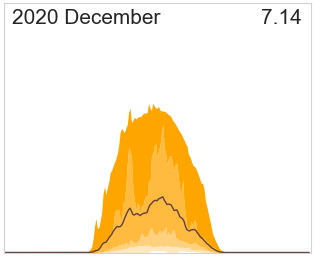
4 Dec it snowed, so the panels were covered and not generating at the start of the day, not that it made much difference once they were clear! 6/7 Dec half of the panels stayed off all day (another day of near freezing cold, still, damp weather). 8 Dec started cold and still, then got sunnier; half the panels waited until about noon to come on (the other half maxing out as shown by the flat region of the curve), presumably having "dried out" by then. Similarly, on 9 Dec this half of the panels waited until around noon to come on, and then on 12 Dec they stayed off all day. 23 Dec they were a little slow to come on.
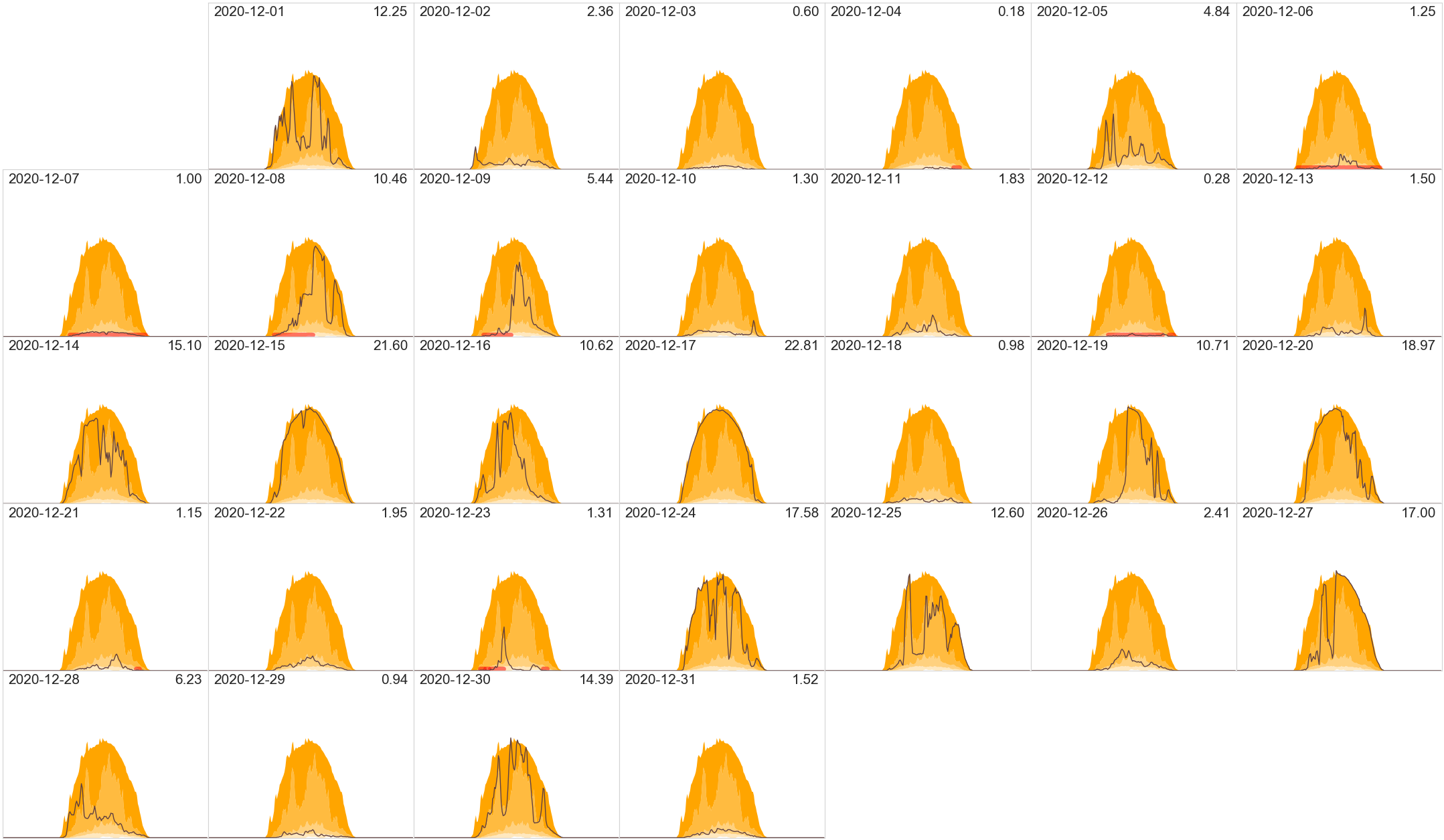
27 Nov half of the panels stayed off all day (near frezing cold, still, damp weather); not that it made that much difference to the overall total. 28/30 Nov half the panels came on a little later that the others; it was warmer/windier, so any damp had a chance to dry out eventually. This is indicated with a red line along the time axis for when only half the panels are generating.
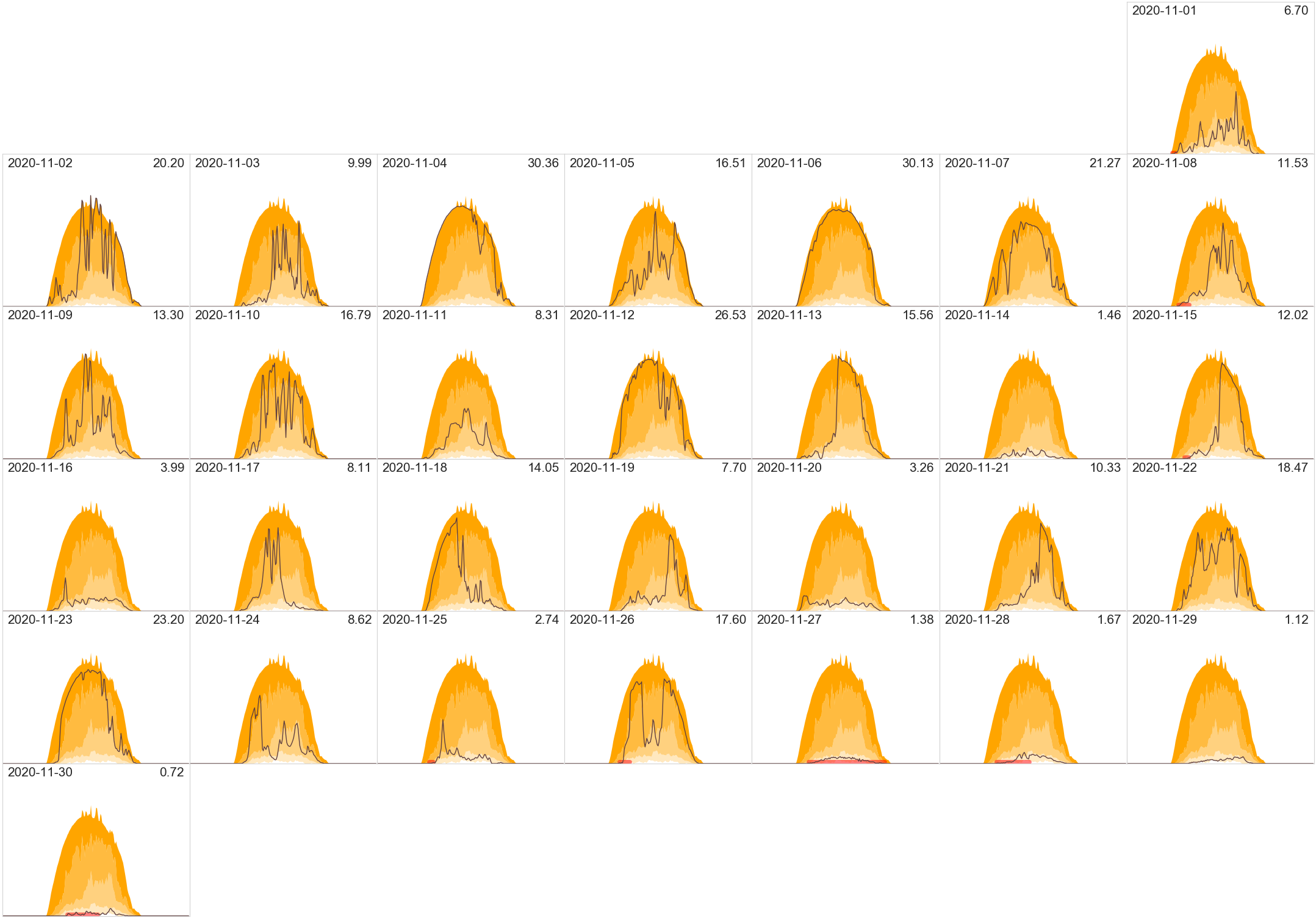
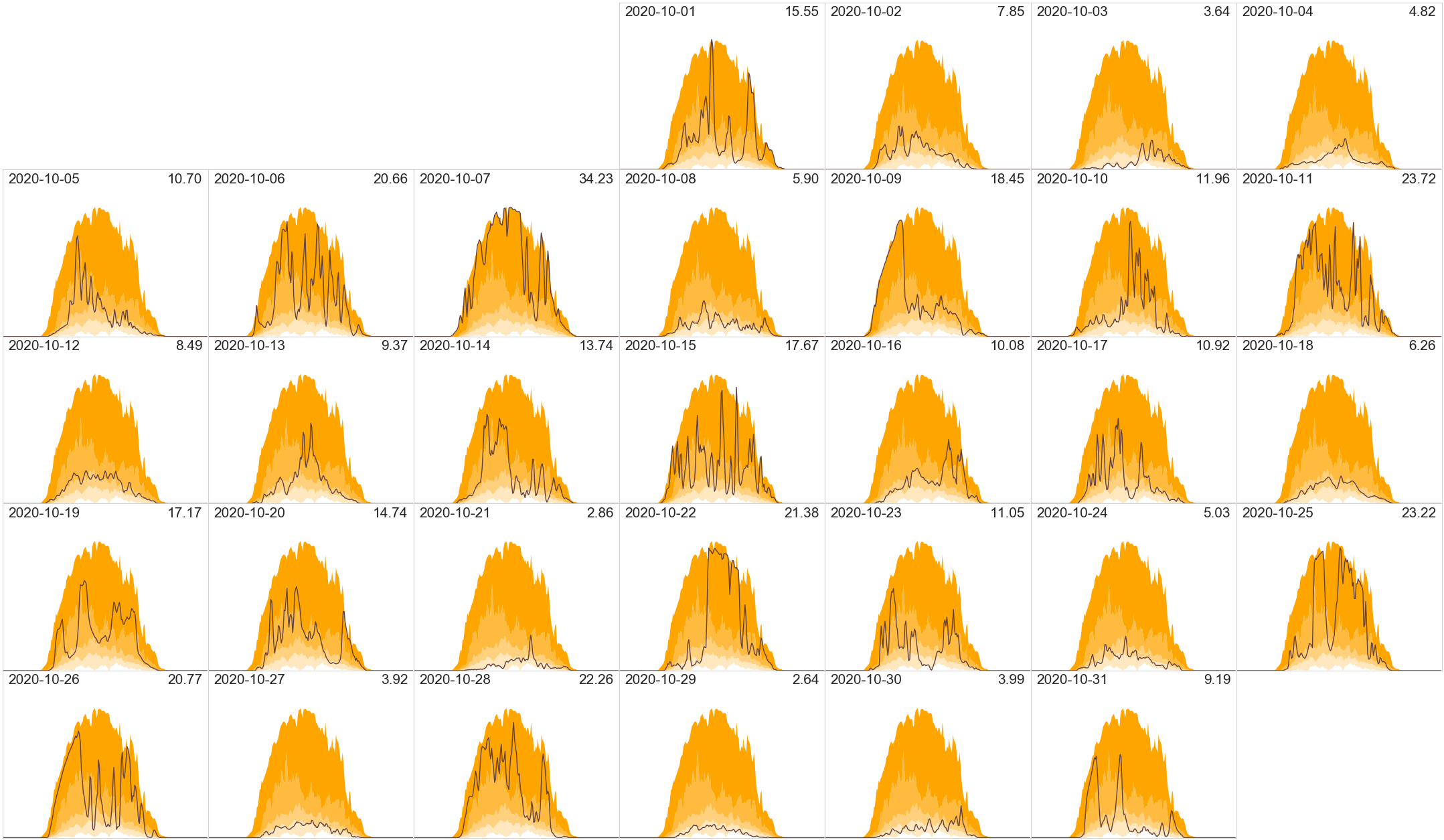
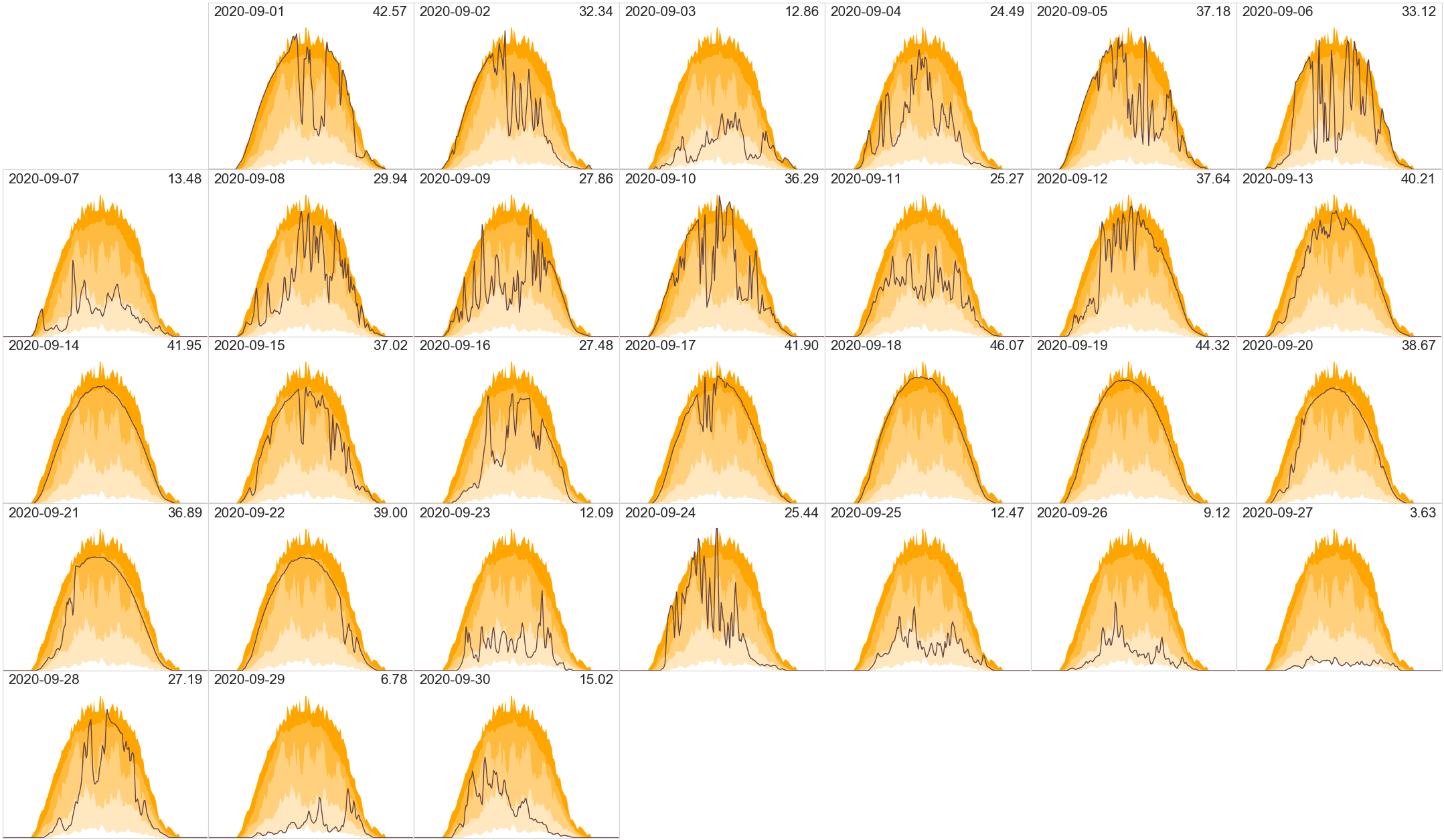
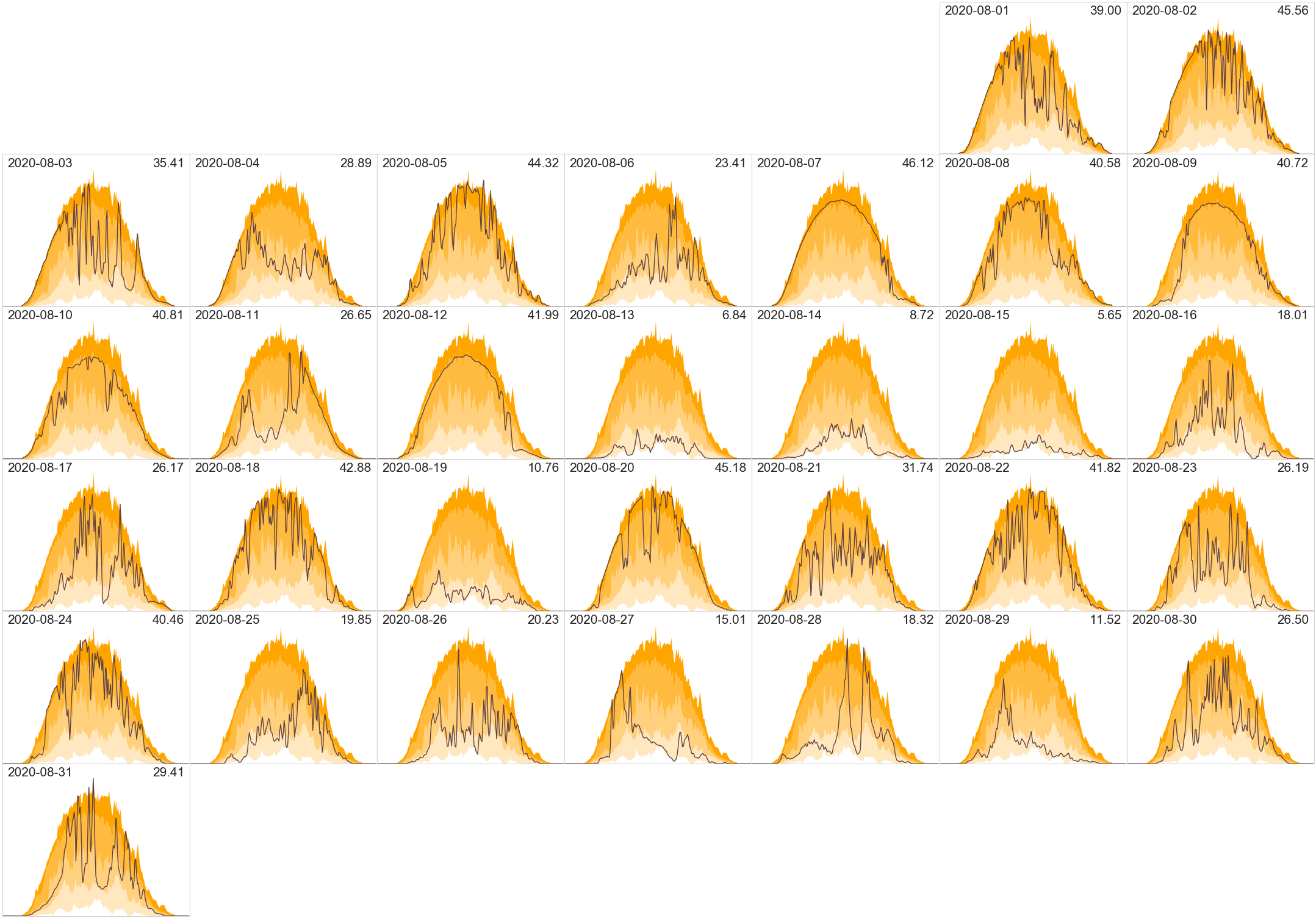
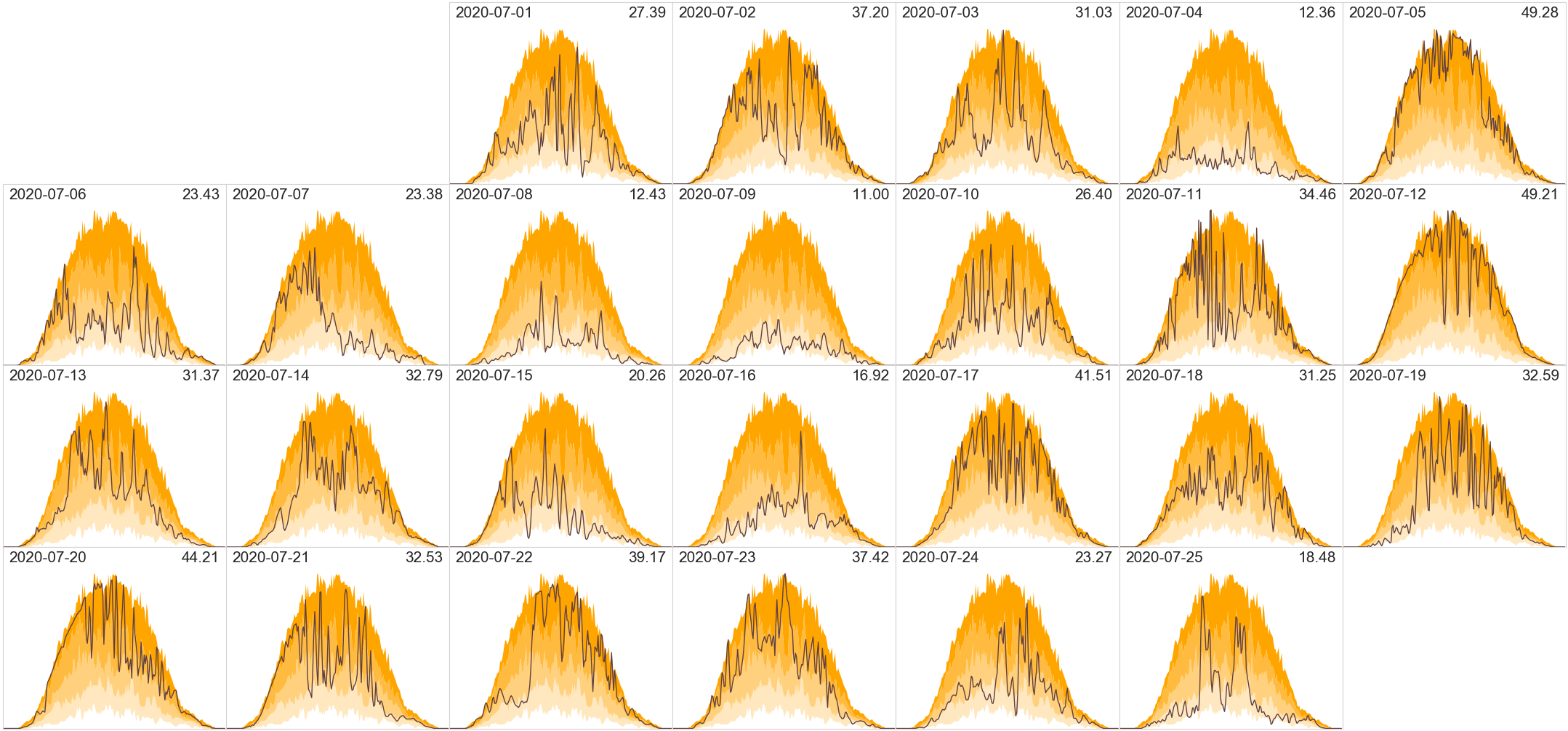
The power (and hence PV) was off for about an hour in the morning of 10 June, for some electrical work.
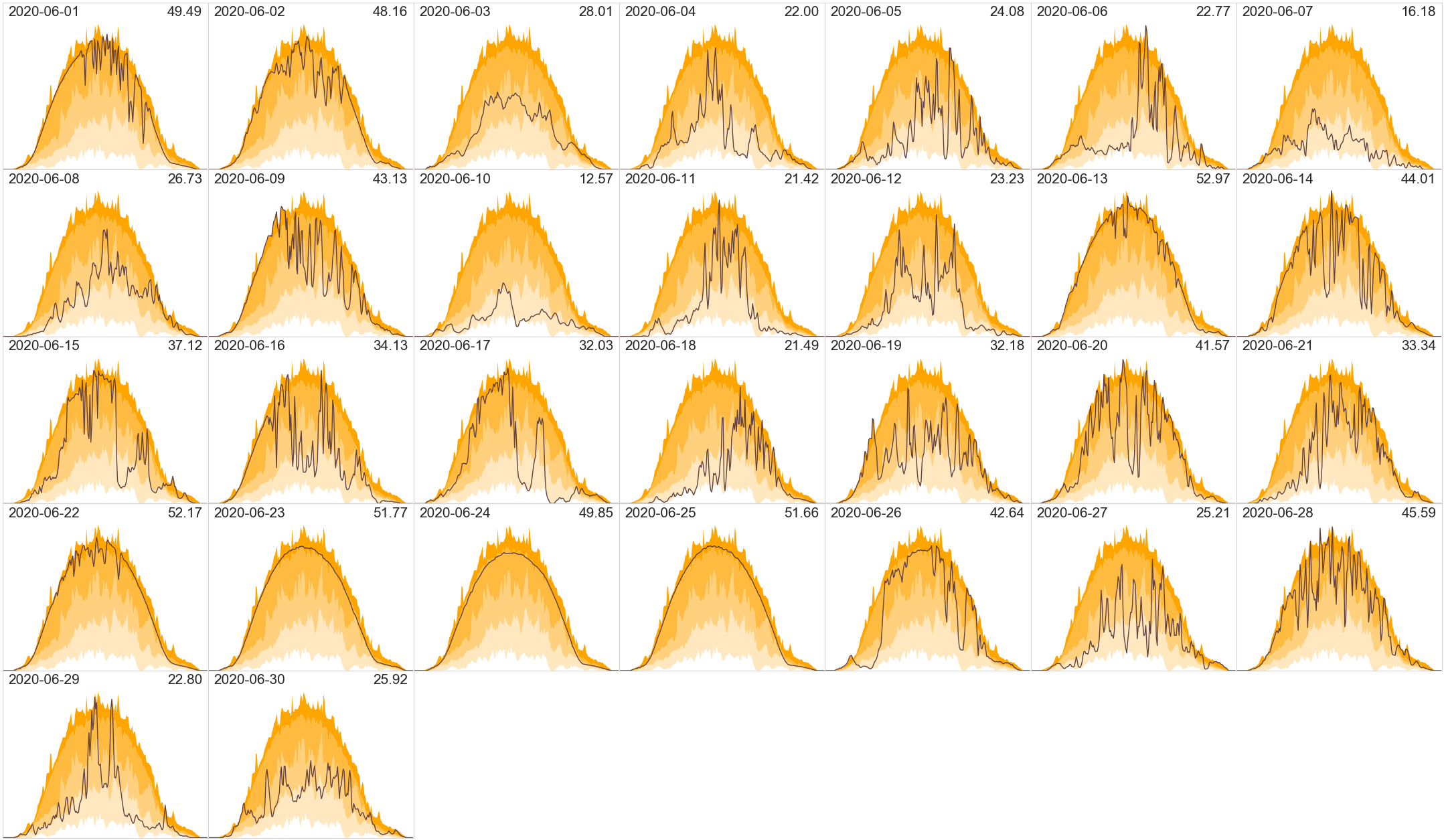
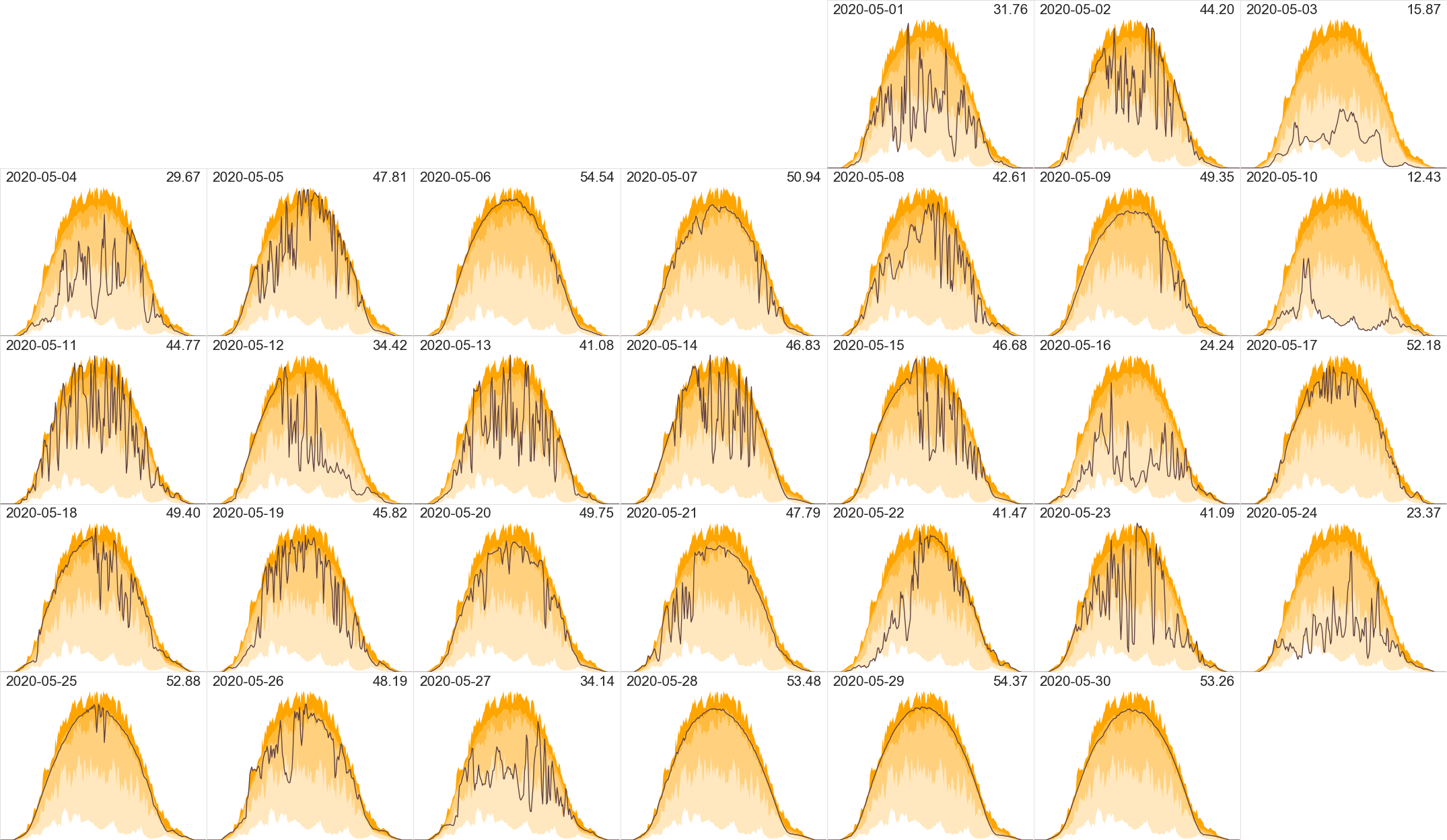
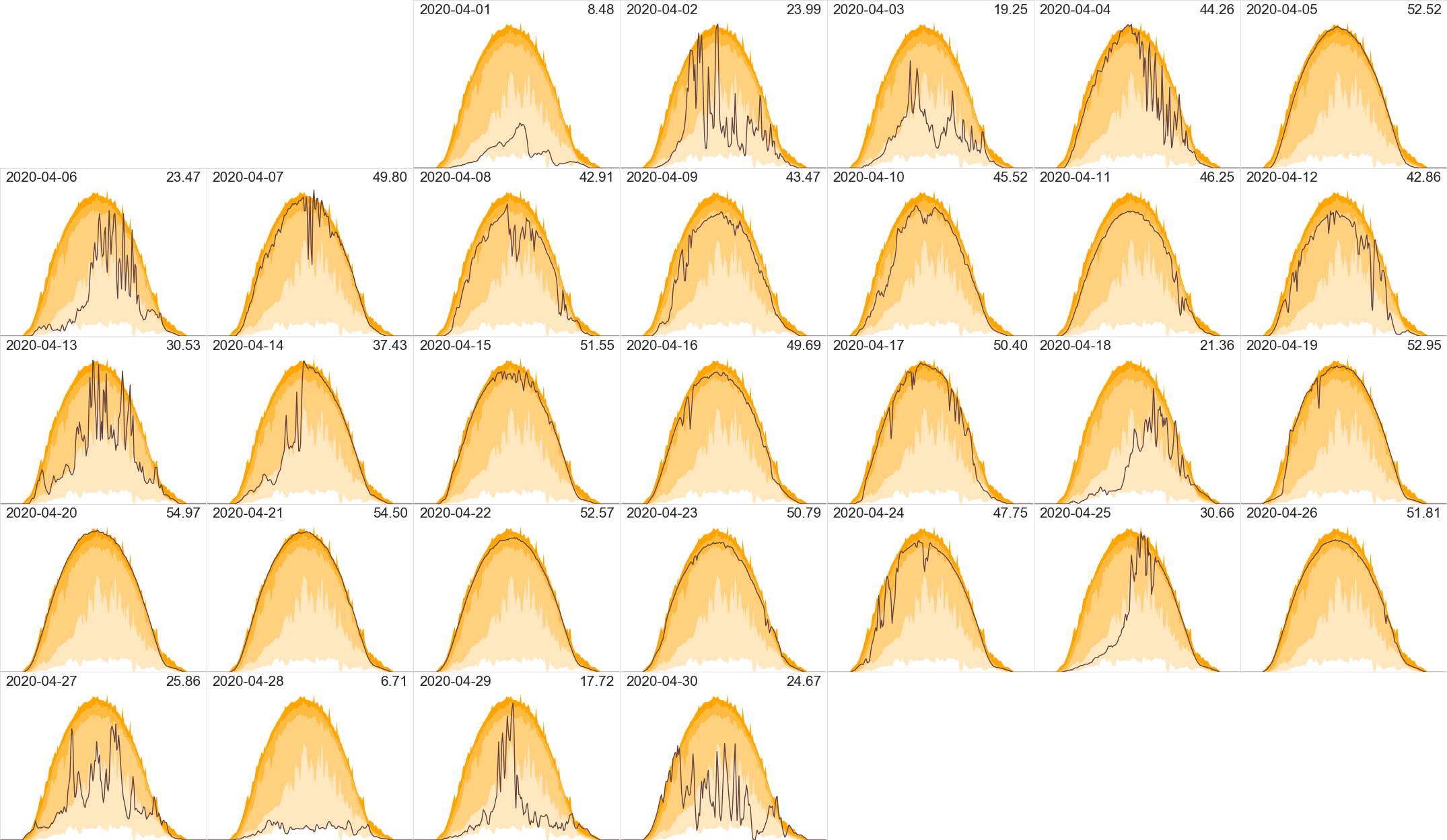
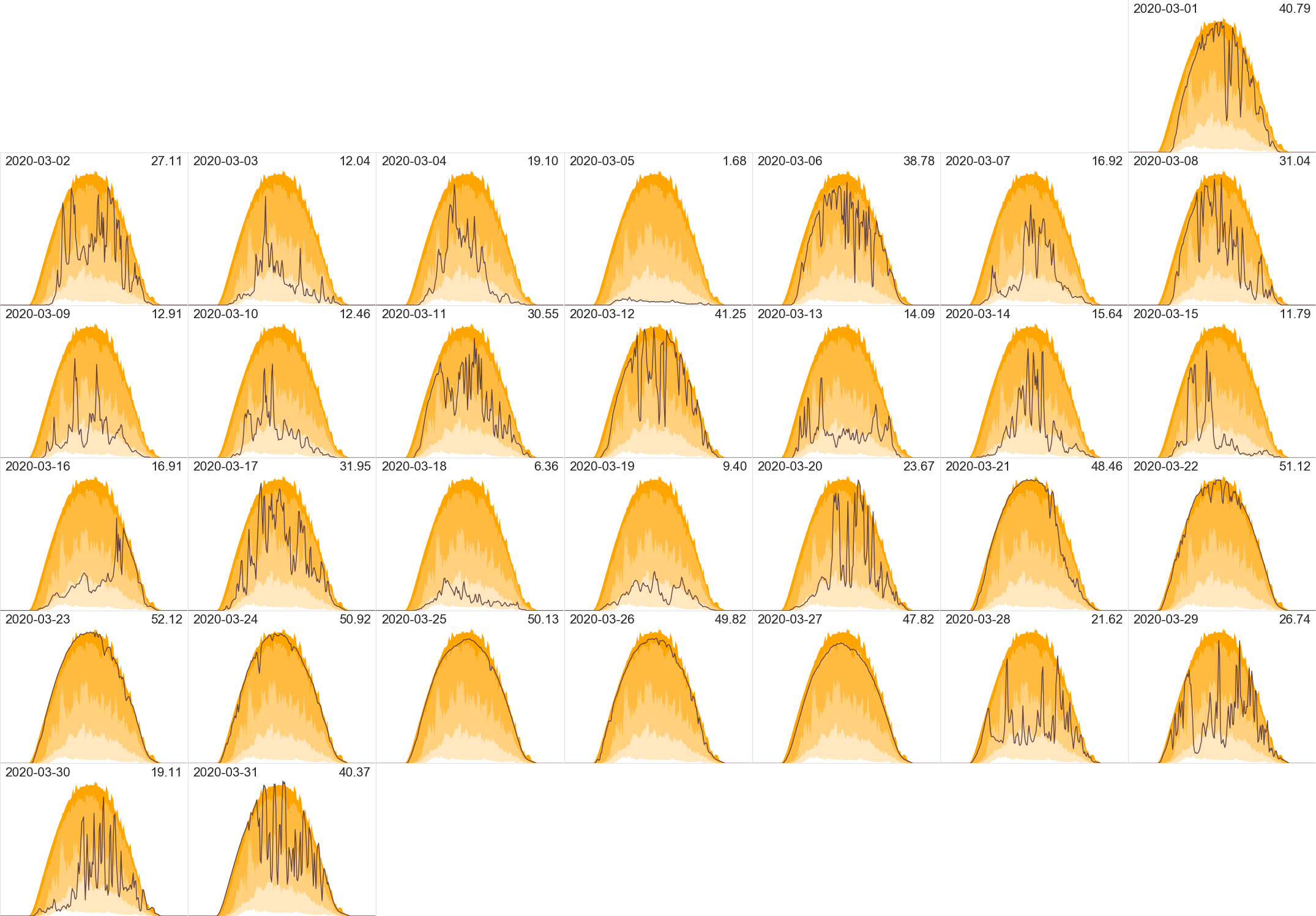
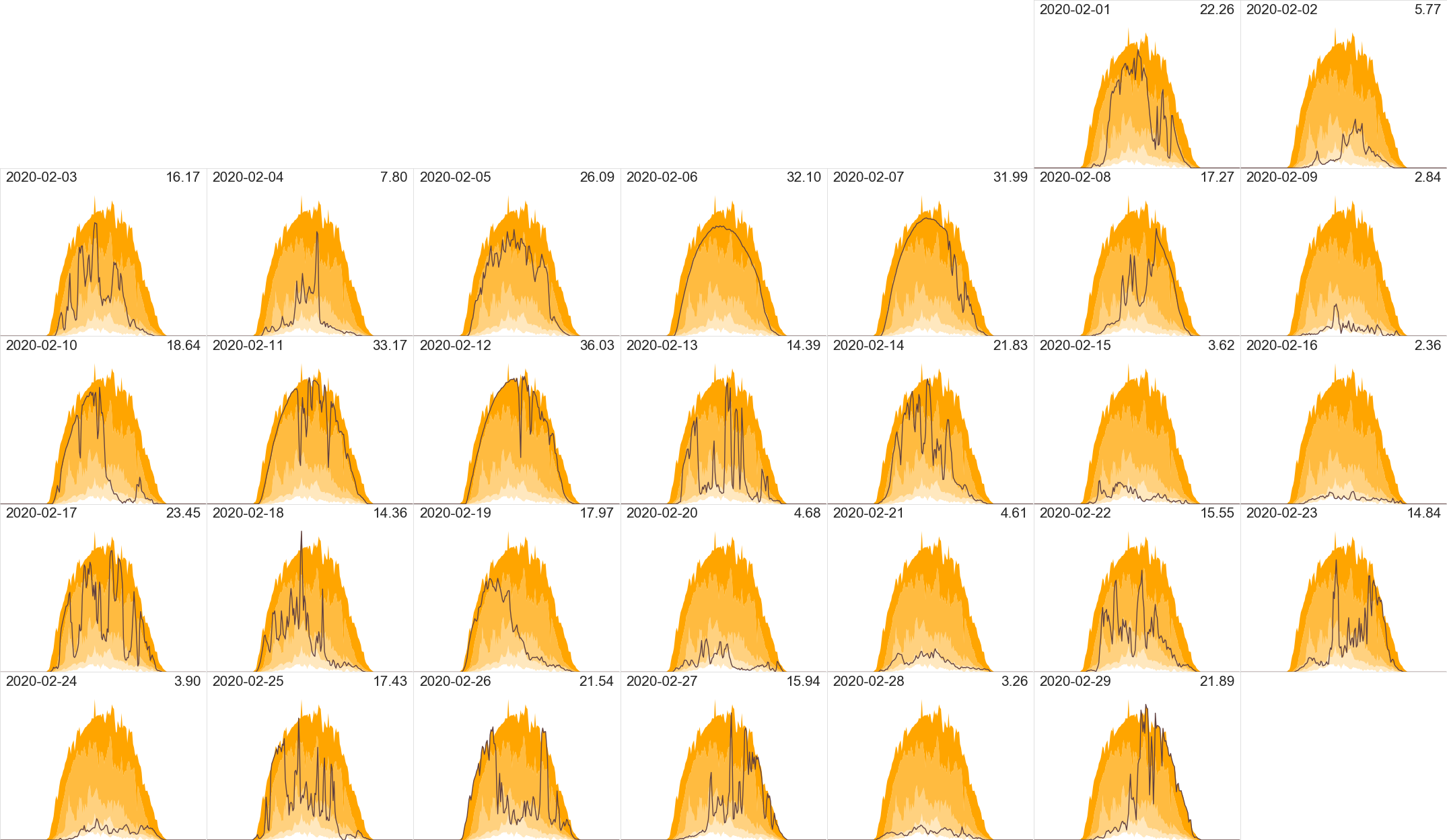
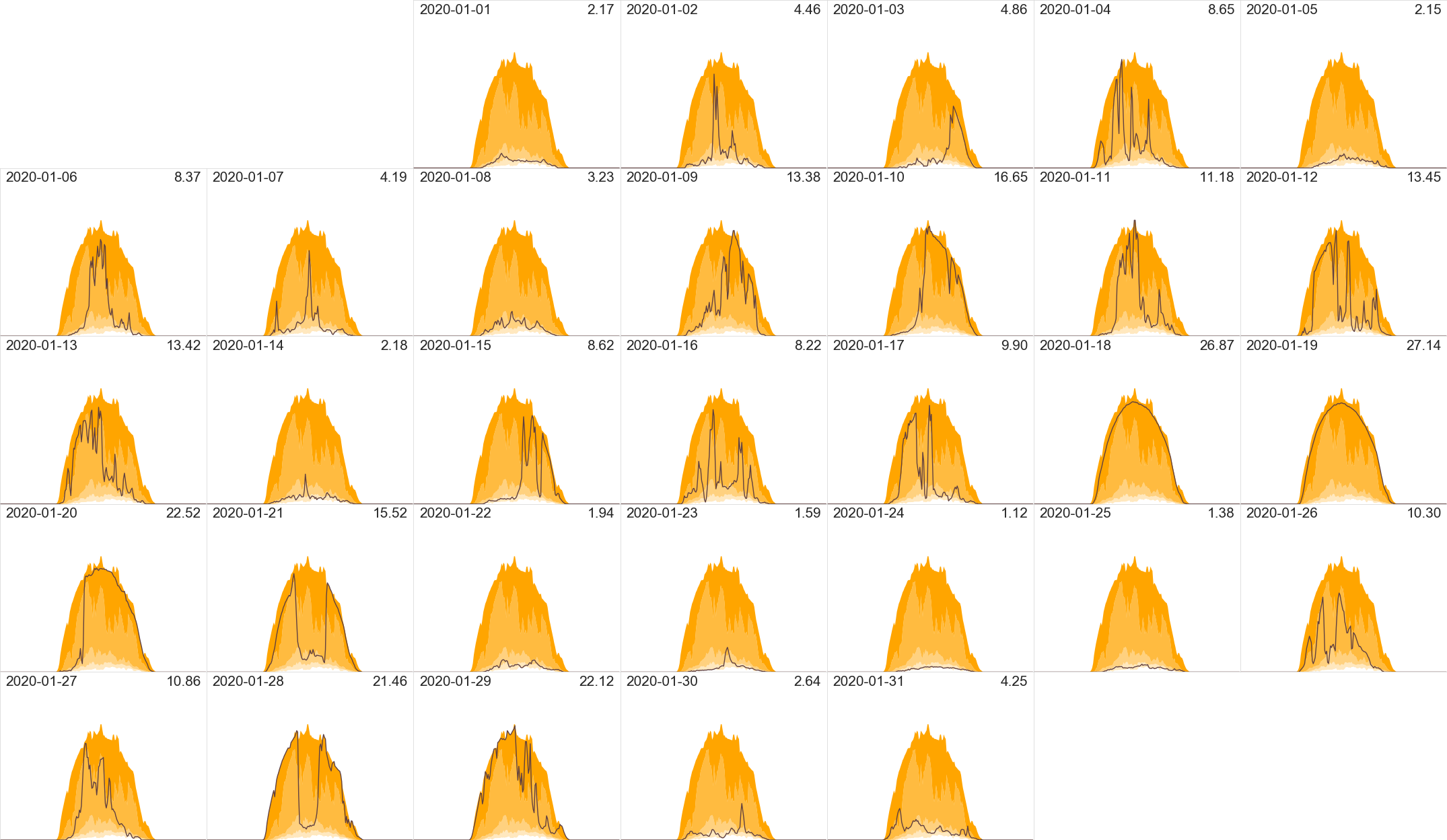
Our annual power imported (red), generated and used (orange), and generated and exported (green), in MWh (bars), with shading indicating the contribution of the respective months. The labels above the bars are the totals in MWh. The labels straddling two bars show: (left) our total usage, both imported and generated; (right) our total generation, both used and exported. (Data collection started on 8 March 2014; 2014 Jan and Feb contributions have been estimated as the 2015 values, to aid comparison.)

Our daily power used and export, in kWh. The region above the axis represents our usage: blue is “surplus” generated power used by the immersion heater (data on this started being collected from 1 Jan 2015); orange is the remaining ordinary generated usage (or the total generated usage in 2014); red is the extra imported from the grid. The green region below the line is surplus generation exported to the grid.
There are three days of immersion data missing in early April 2015: the (lighter) orange here represents the total generated usage. There is a week of usage data missing in May 2015: the blue is the immersion heater usage, so total generation was at least this. The immersion heater topup system stopped working on 10 Sept 2019, so the lack of blue after that is a genuine zero: instead of using this power to heat our water, we are exporting it.
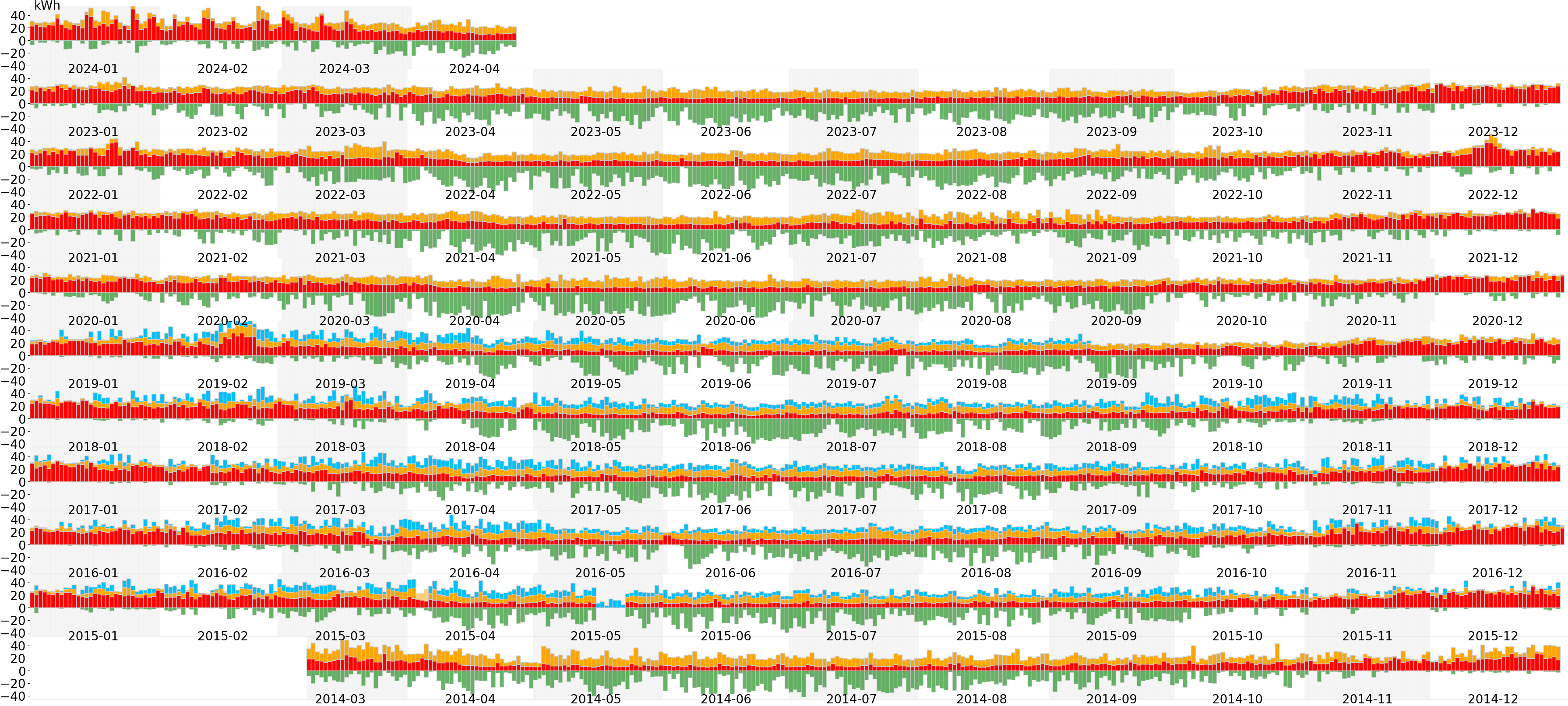
Our daily power used and export, in kWh, by month, using a jitter plot (some jitter is applied to the horizontal position, to prevent overlapping).
The region above the axis represents our usage: orange is generated usage, red is the extra imported from the grid. The green region below the line is surplus generation exported to the grid.
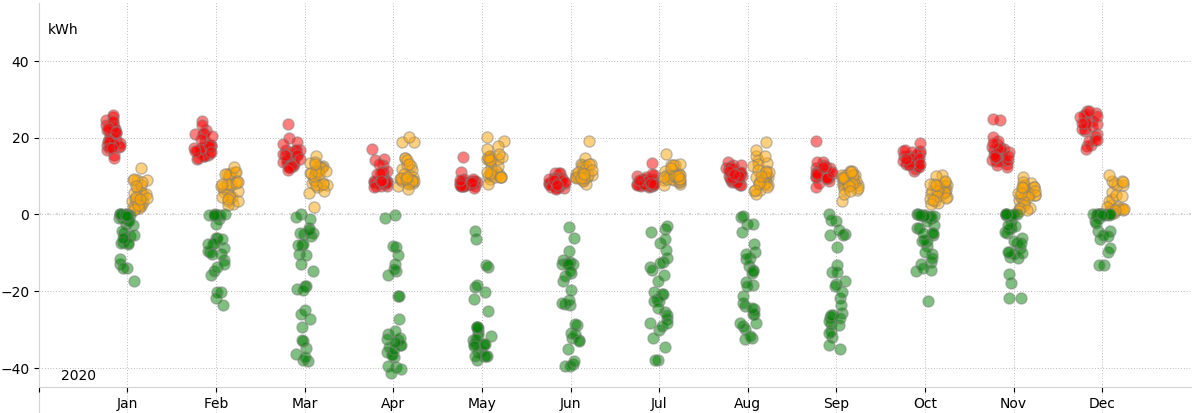
Our daily power used and export, in kWh, by month, using violin plots (a notched box and whisker plot—where the box shows the inter-quartile range, with 95% confidence interval notches; whiskers show data within 1.5*IQR—plus a kernel density plot). The final, partial, month tends to have larger notches, because it has less data.
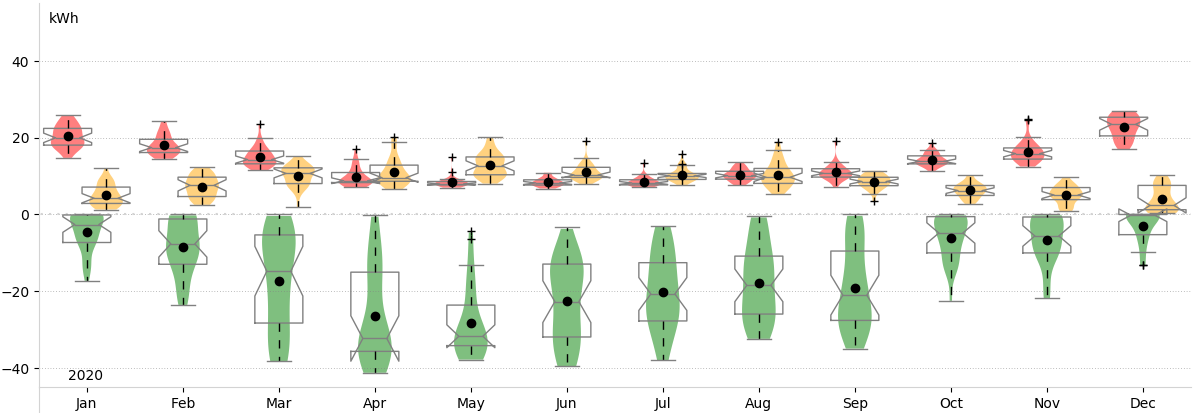
Data is gathered at half minute intervals from the Wattson meter. The horizontal time axis runs from midnight to midnight GMT/BST. The vertical axis runs from -8kW to 8kW. The region above the axis represents our usage: orange is generated usage, red is imported from the grid. The green region below the line is surplus generation exported to the grid. Numbers are in kWh; #orange + #green = the total generated. This is slightly different from the other power generation totals, since it is being recorded by a separate, and less accurate, meter.
On the daily plots, you can see specific usage. The big early morning generated usage is from the immersion heater. The early evening spike at the weekends is dinner being cooked in the electric oven; during the week we usually use the gas hob.
On “green date” days, the green area is greater than the red area (#green > #red), meaning we export more than we import, so are nett generators. The rest are days where we import more than we export, taking more from the grid than giving back. On “orange date” days, we still generate more than we import, but use enough of it that we are not nett exporters. On “red date” days we import more than we generate; but even so, may still export a little during the day.
The situation is actually greener than this implies: some of that orange usage of generated power is being used to heat our water, thereby saving gas consumption, too. From 1 Nov 2015 we started collecting data on how much power is being sent to the immersion heater during the day: this is shown as blue on the plots. So after 1 Nov 2015, orange represents generated usage in all but the immersion heater.
